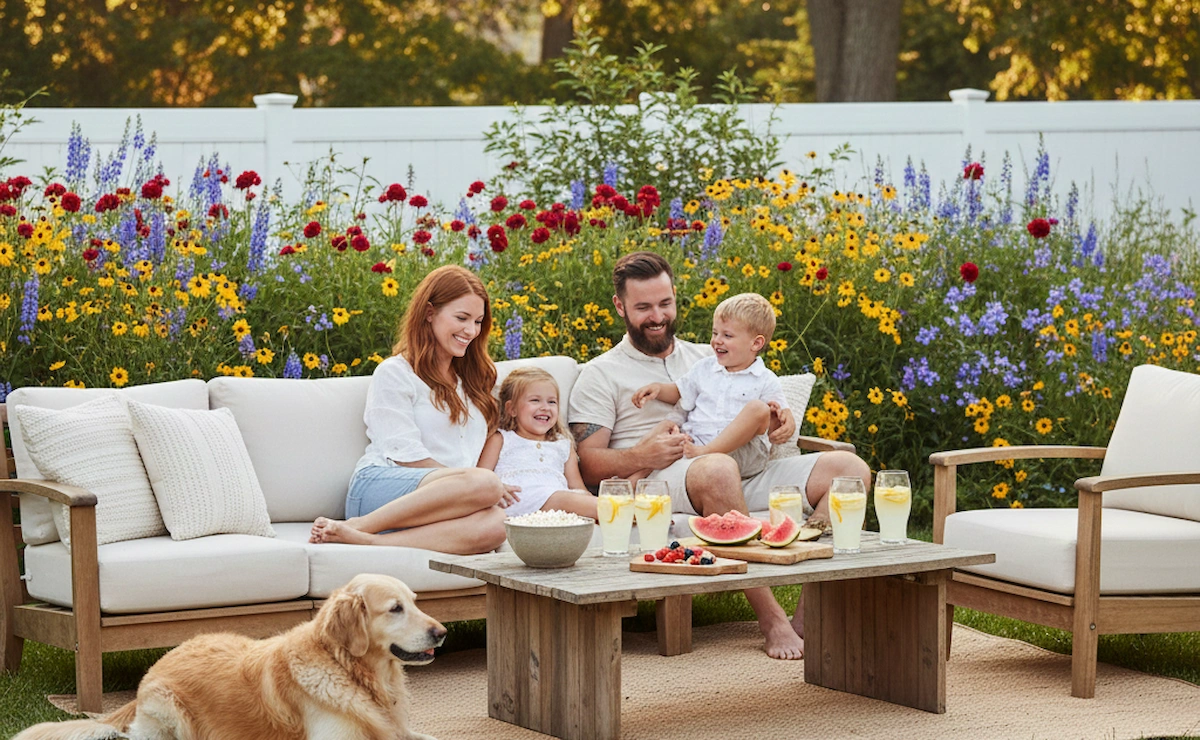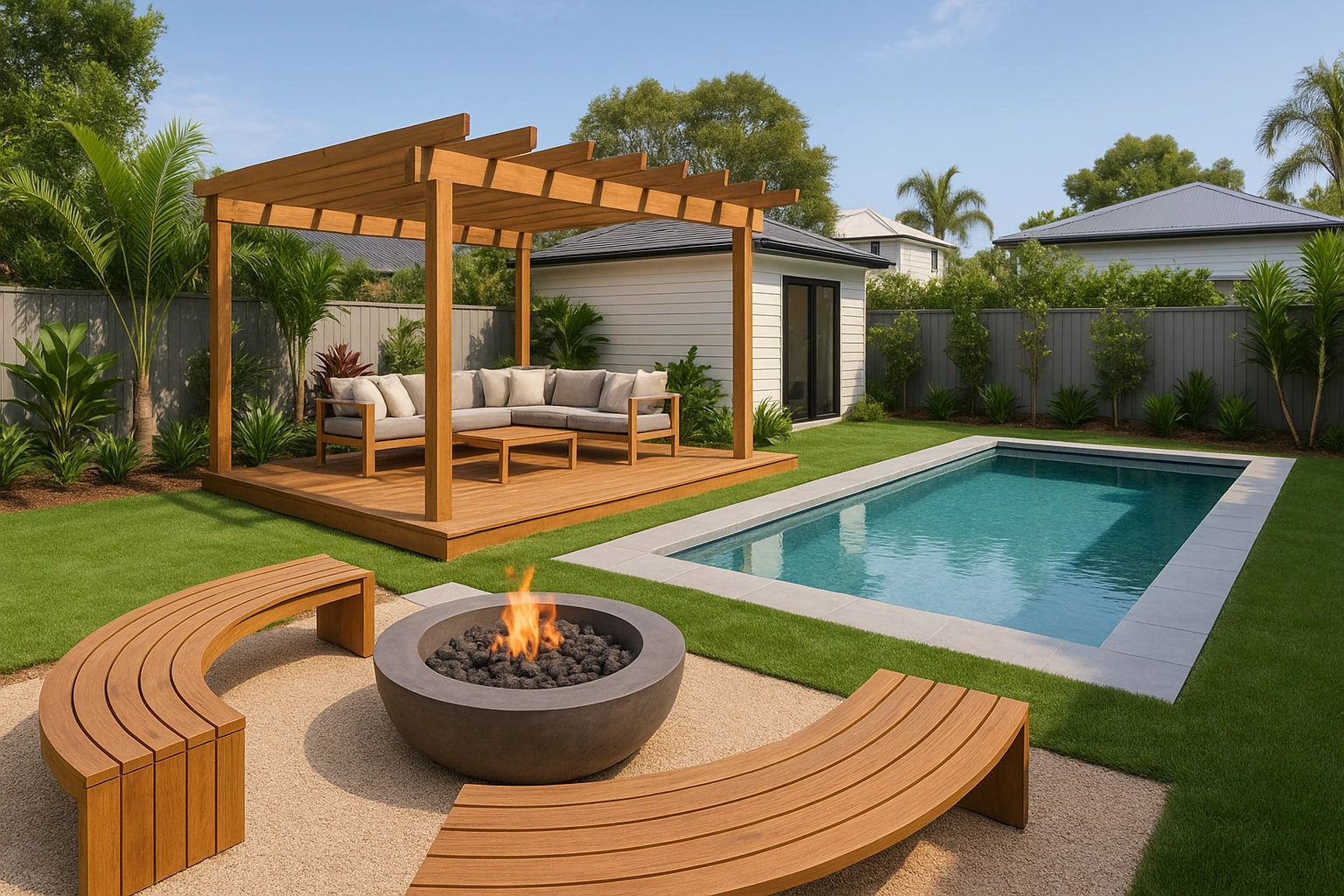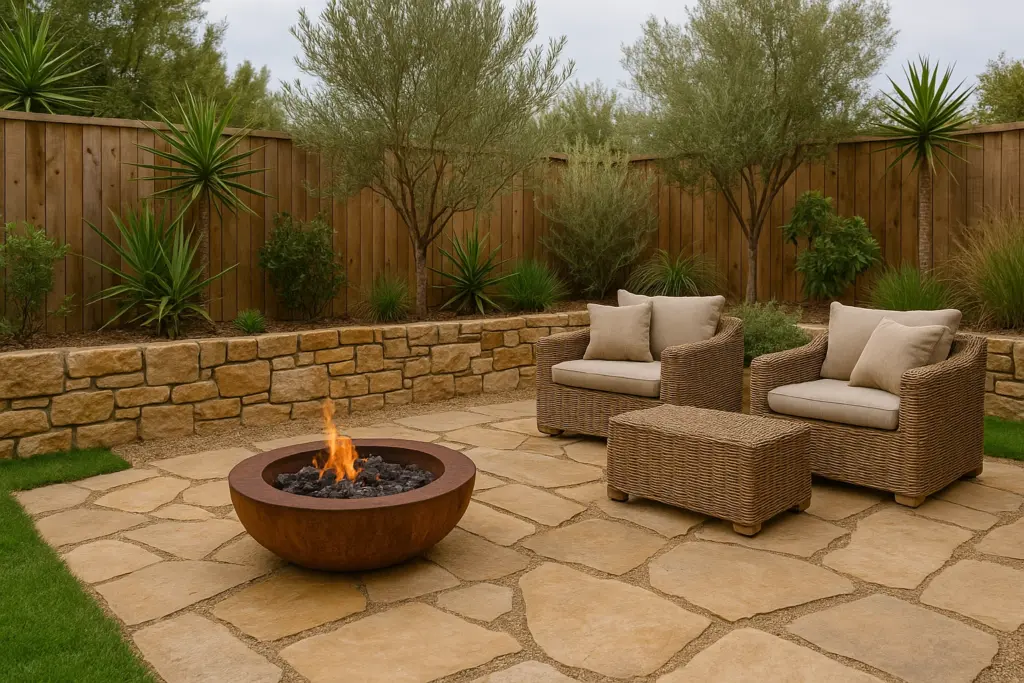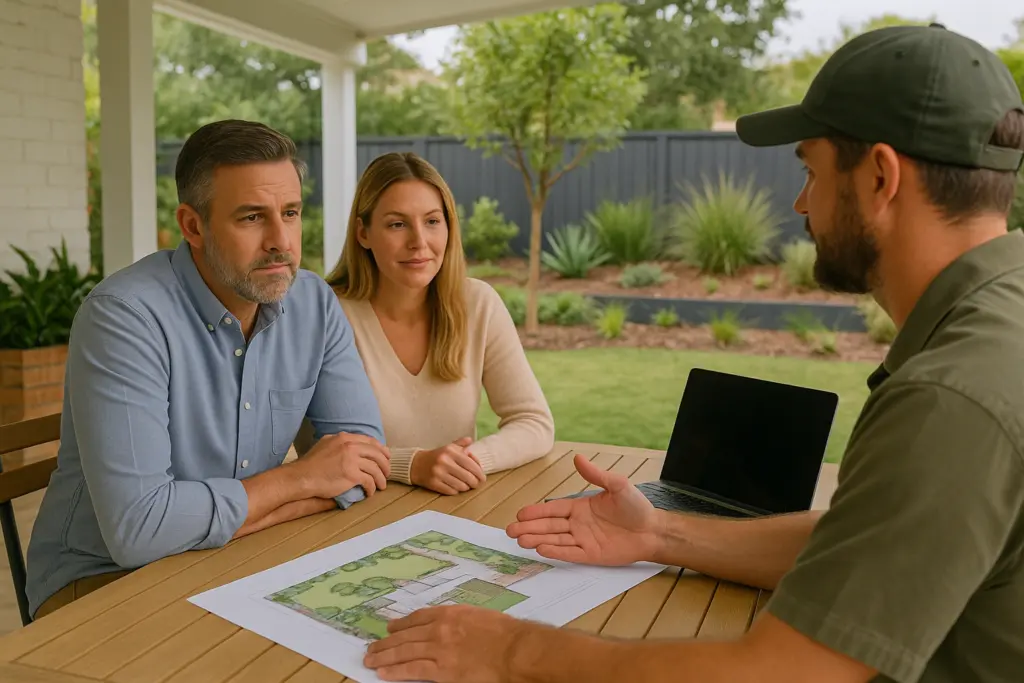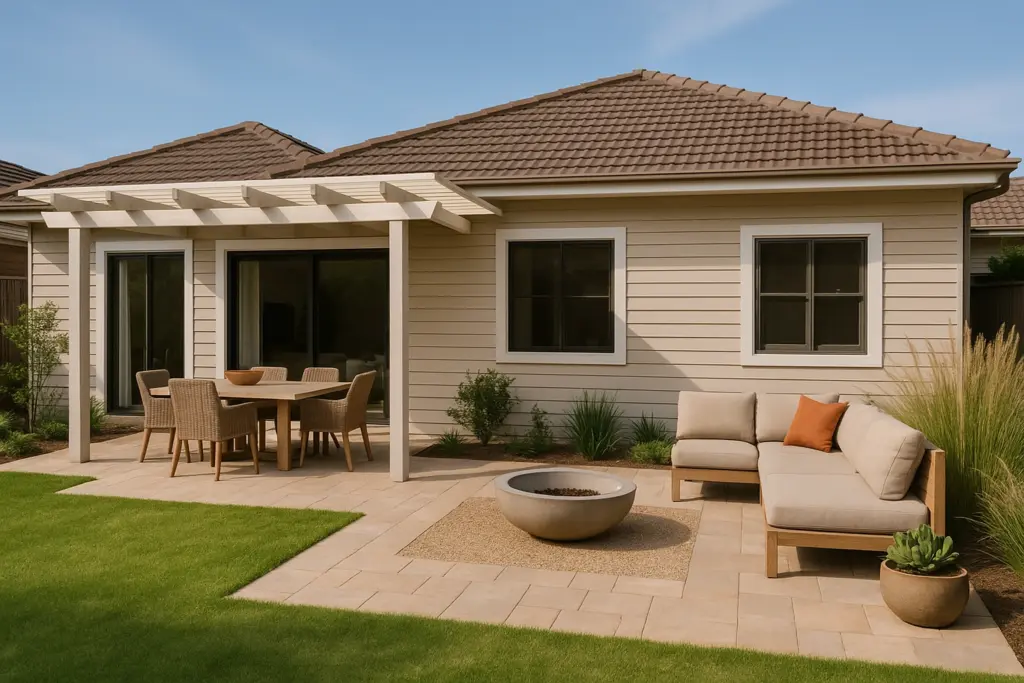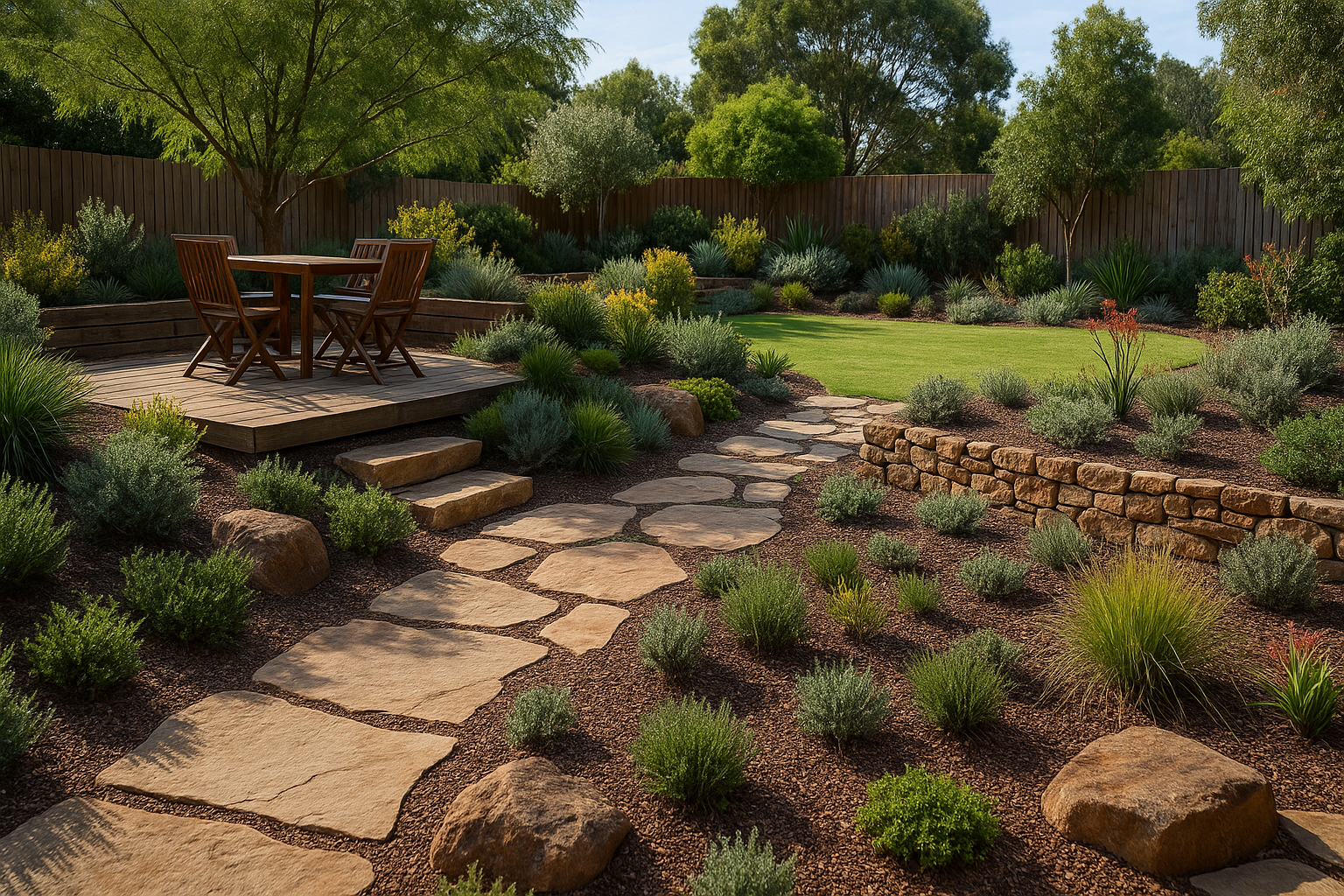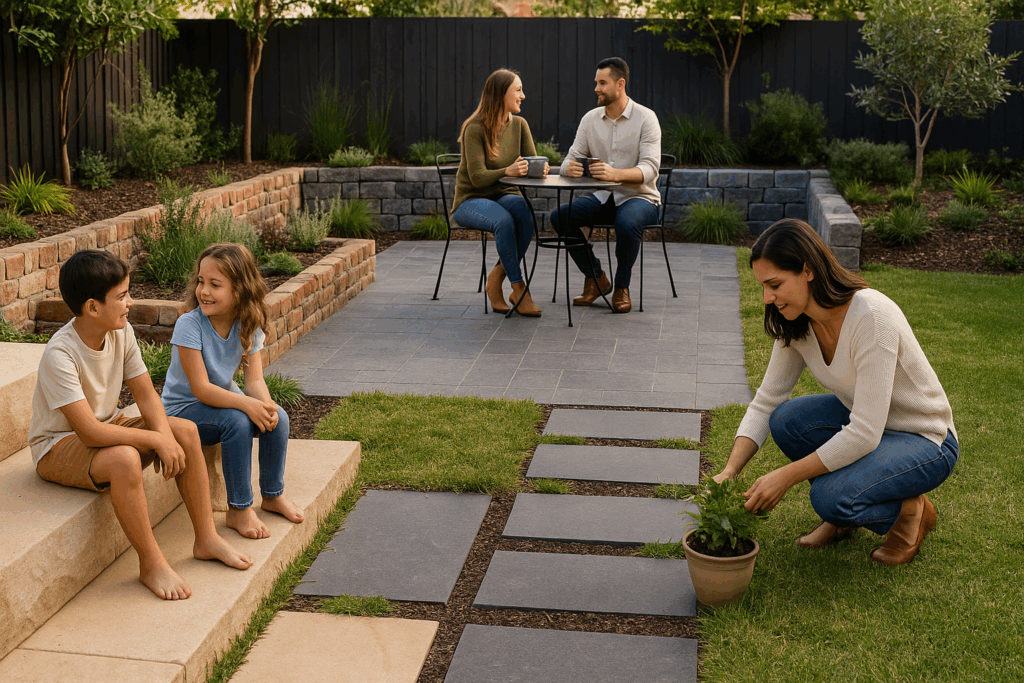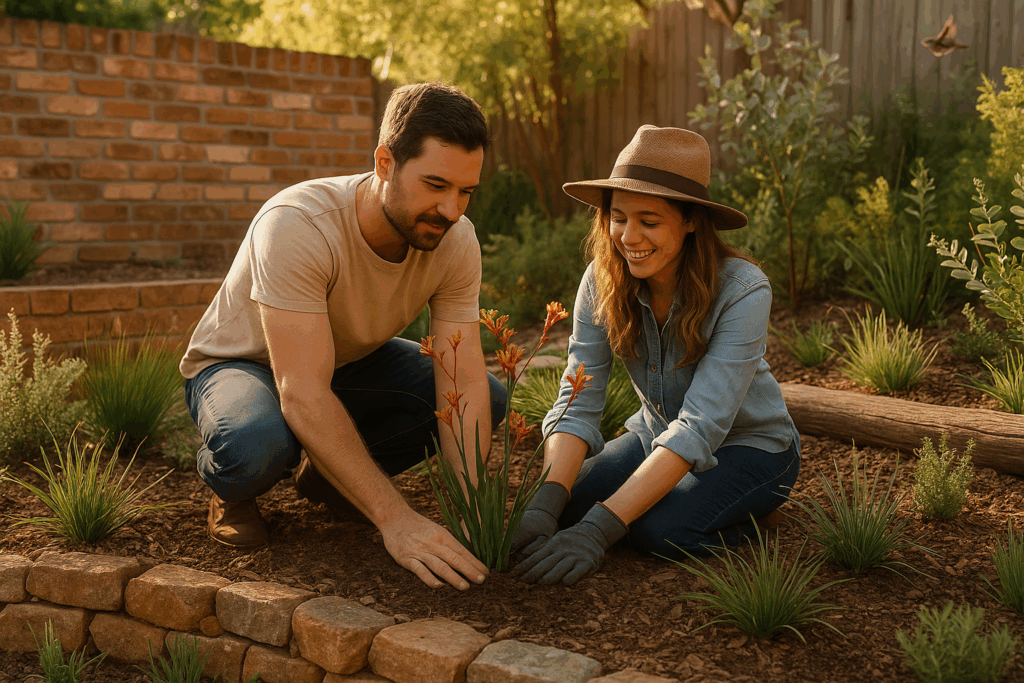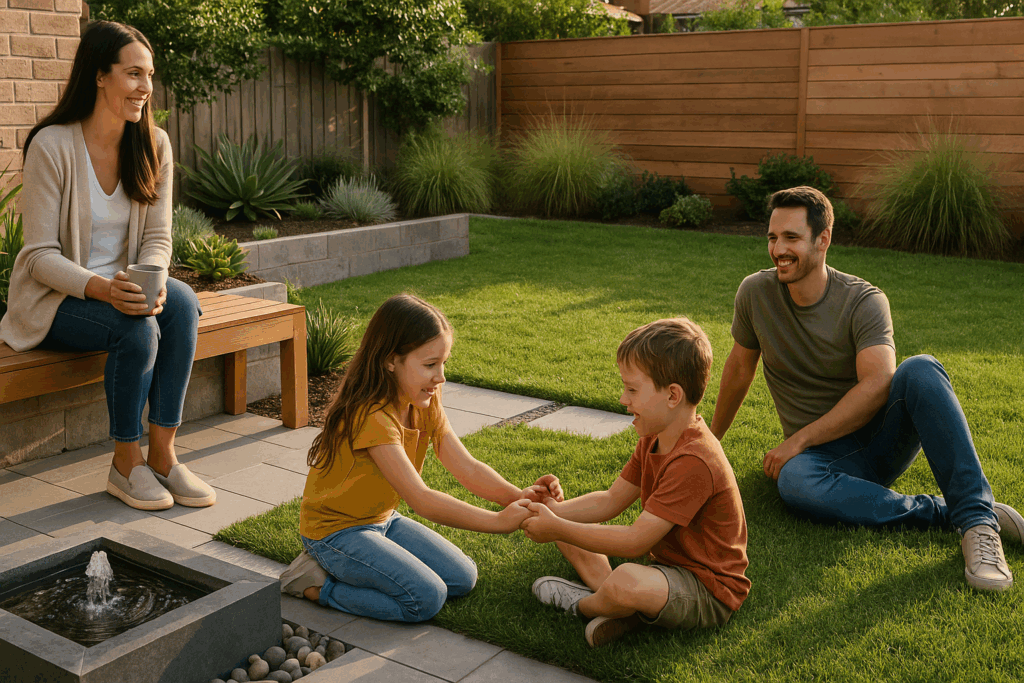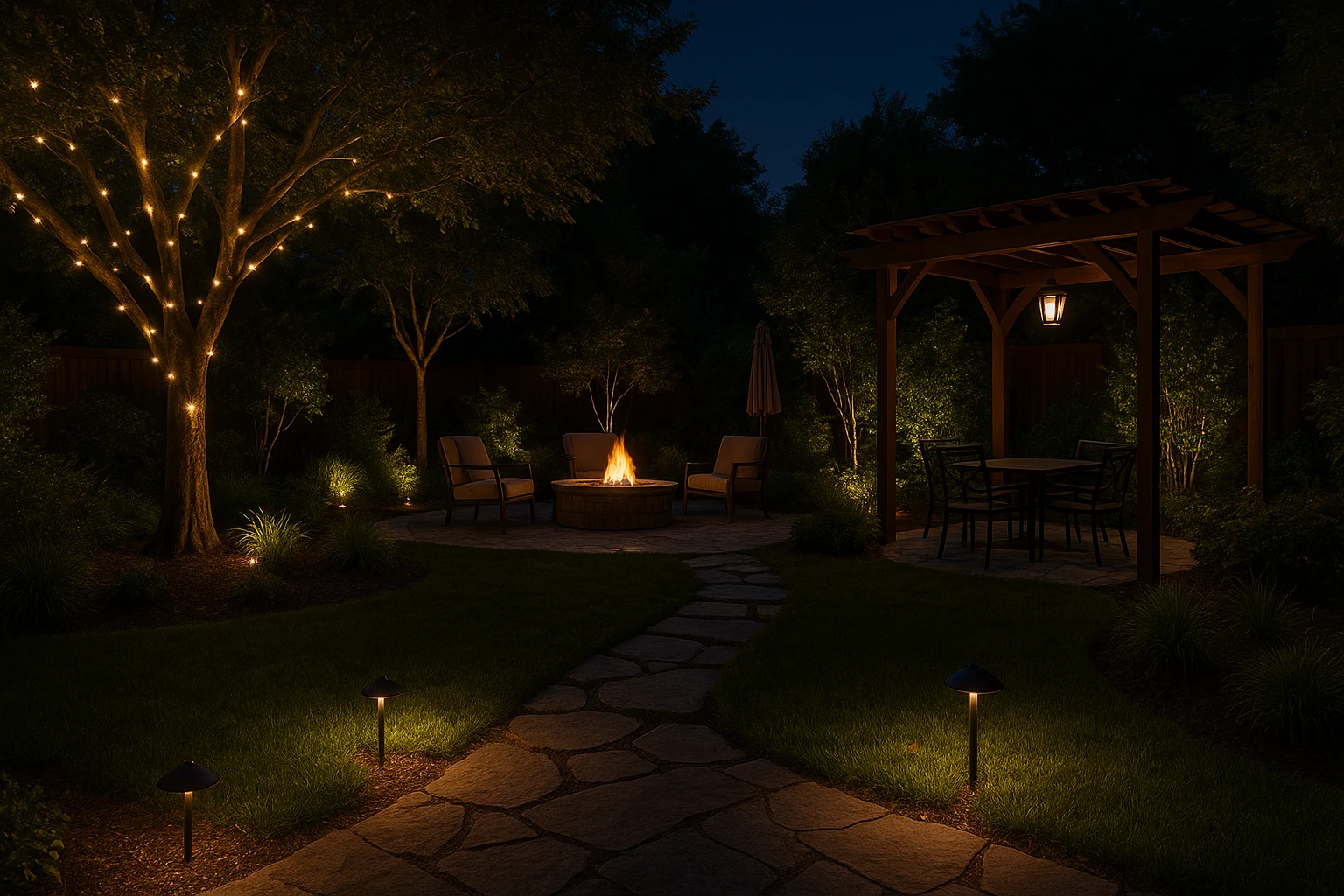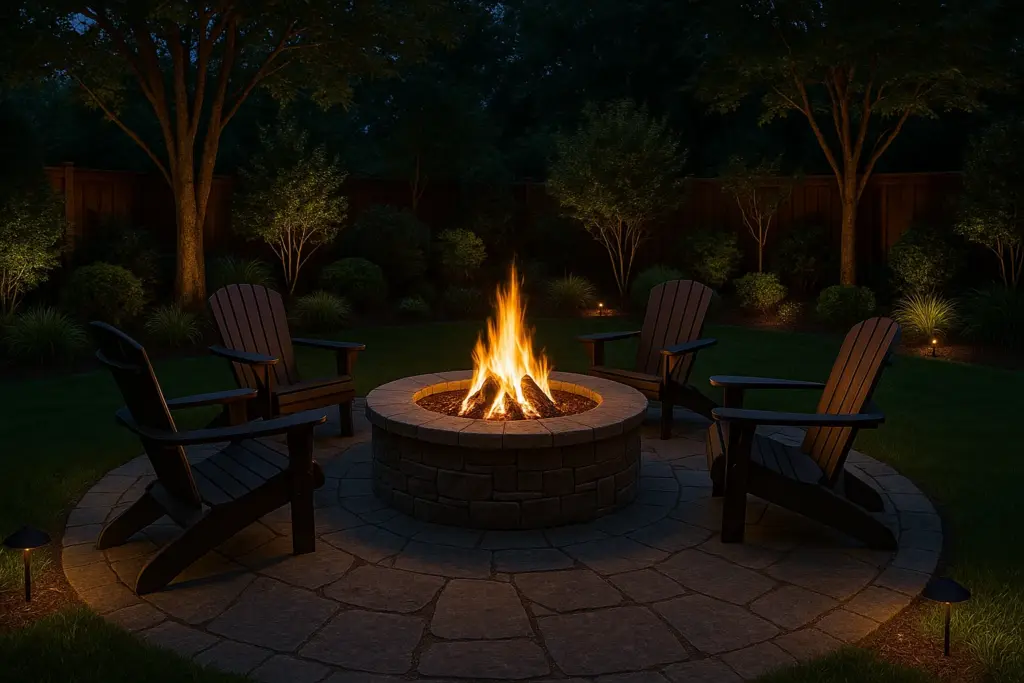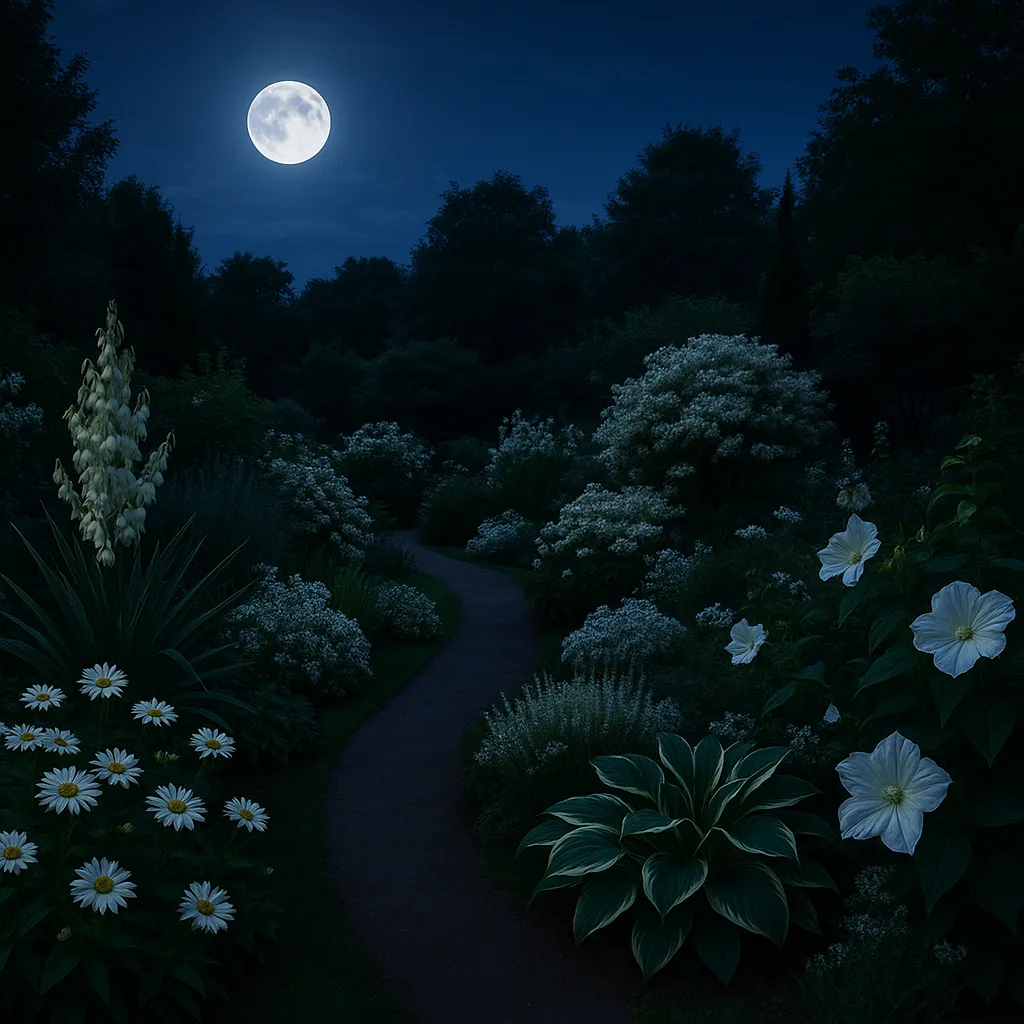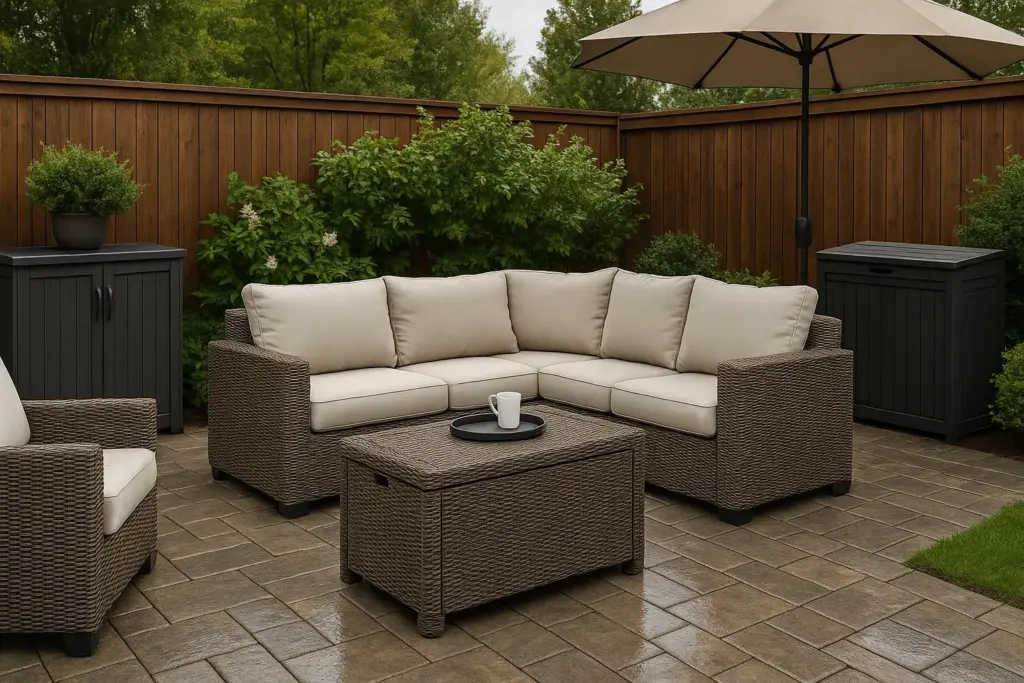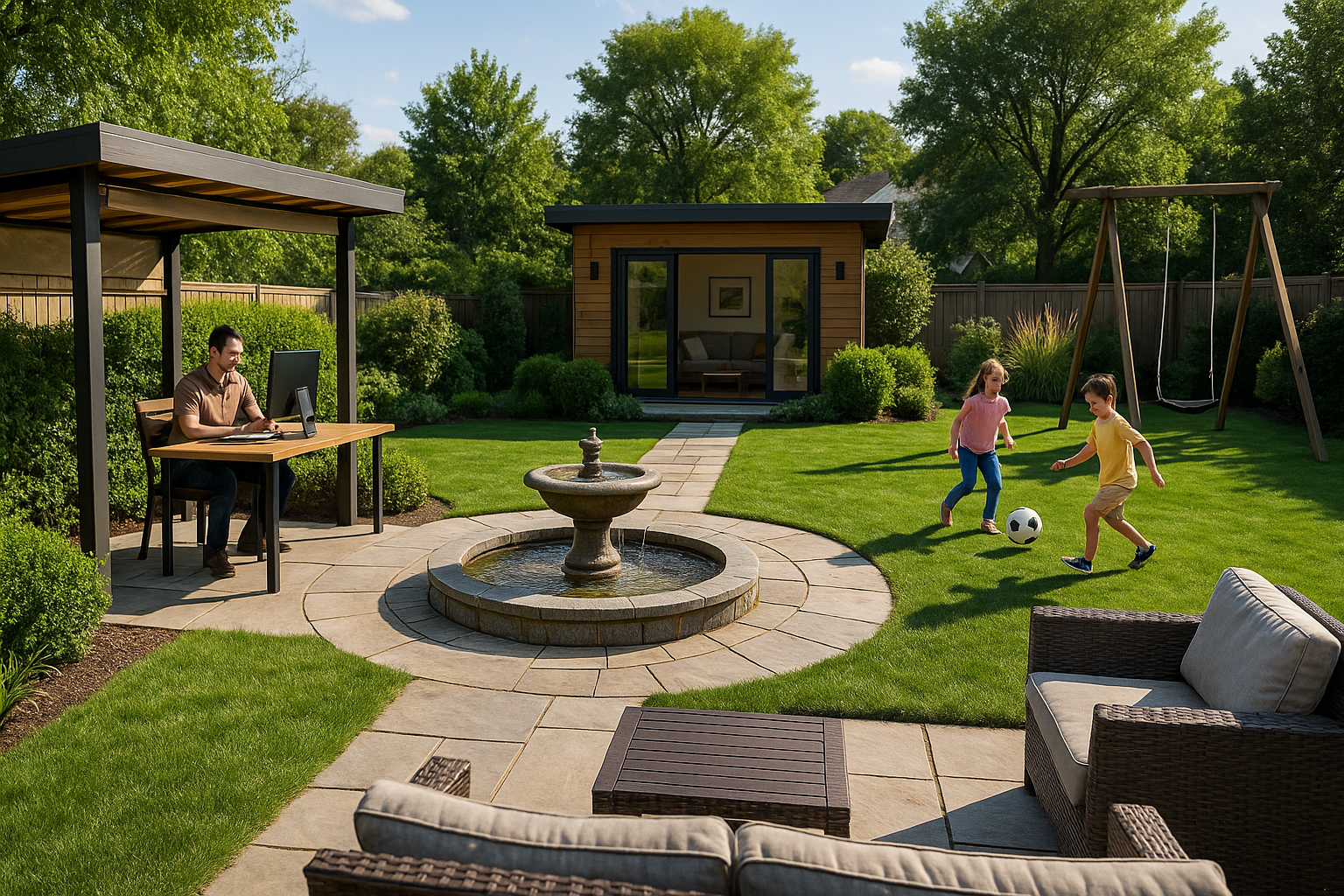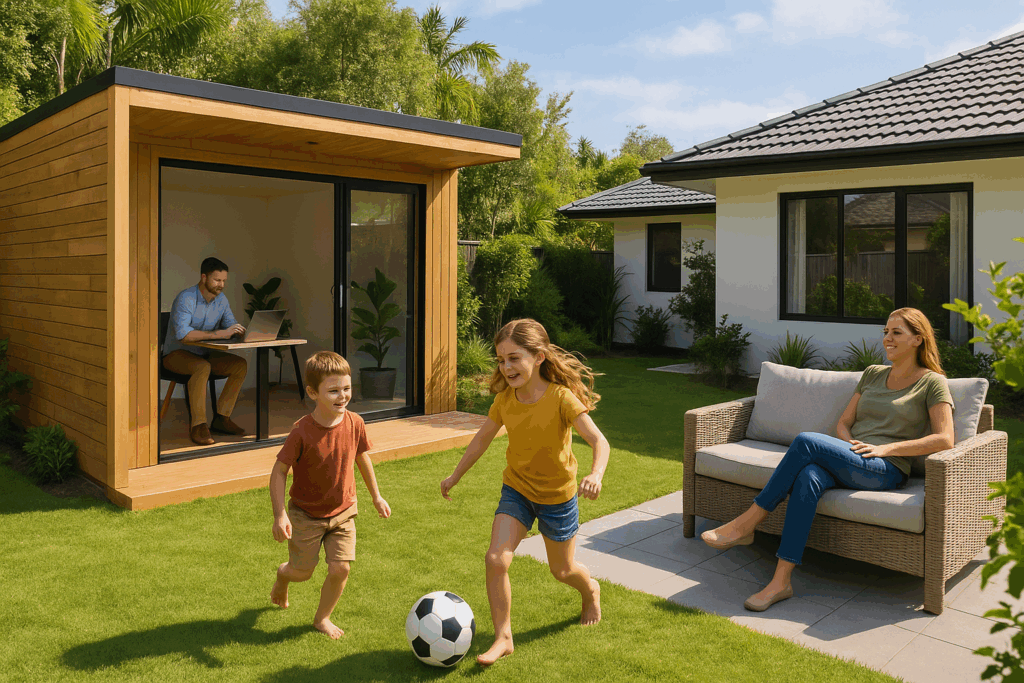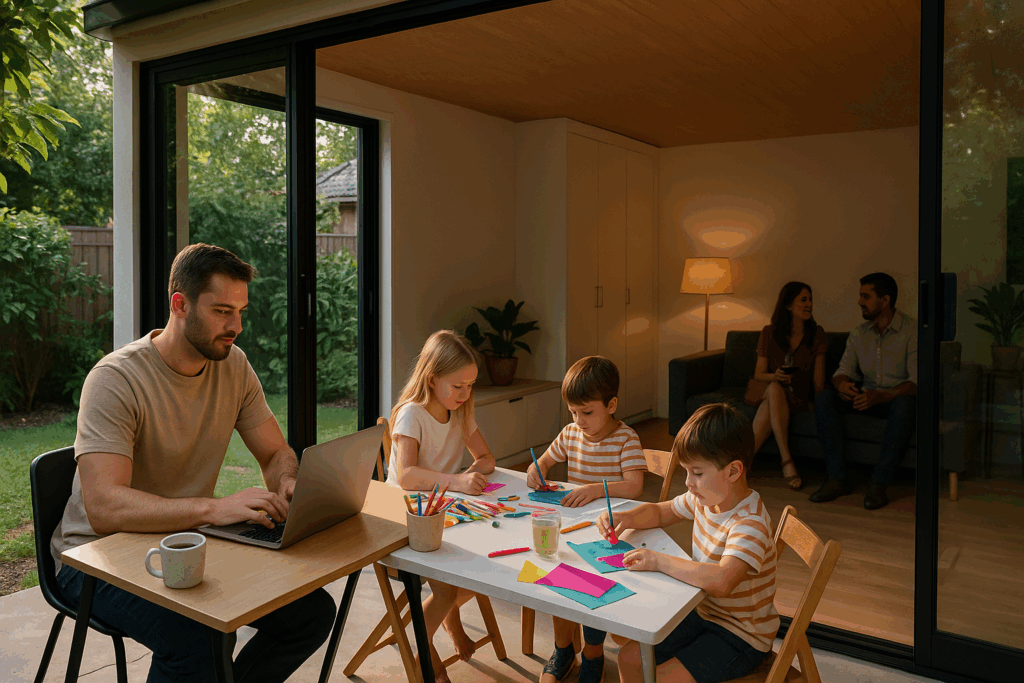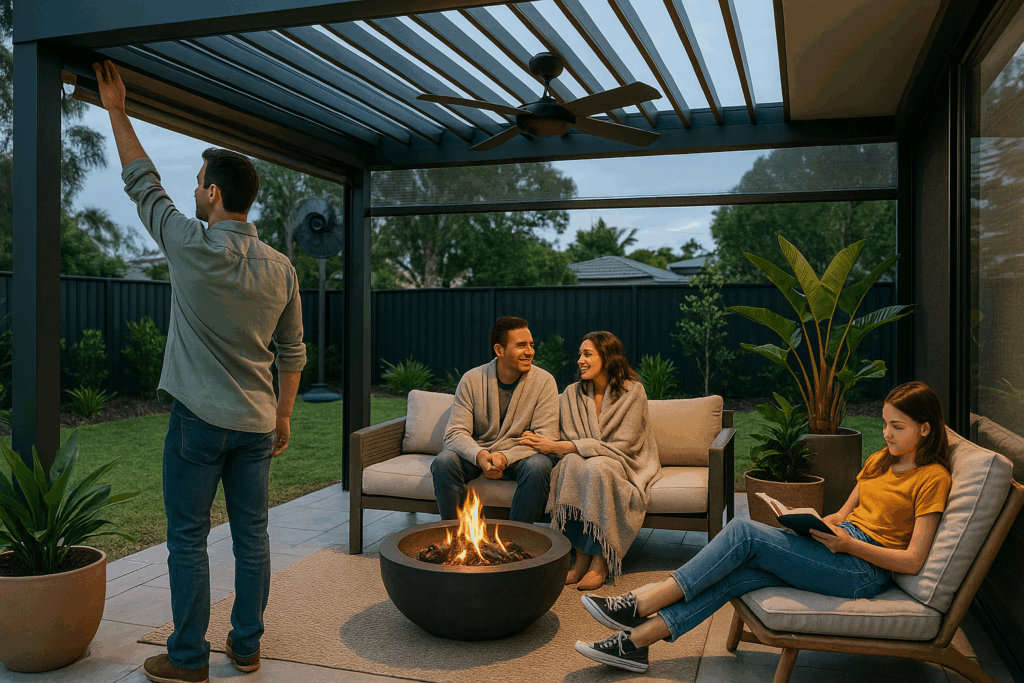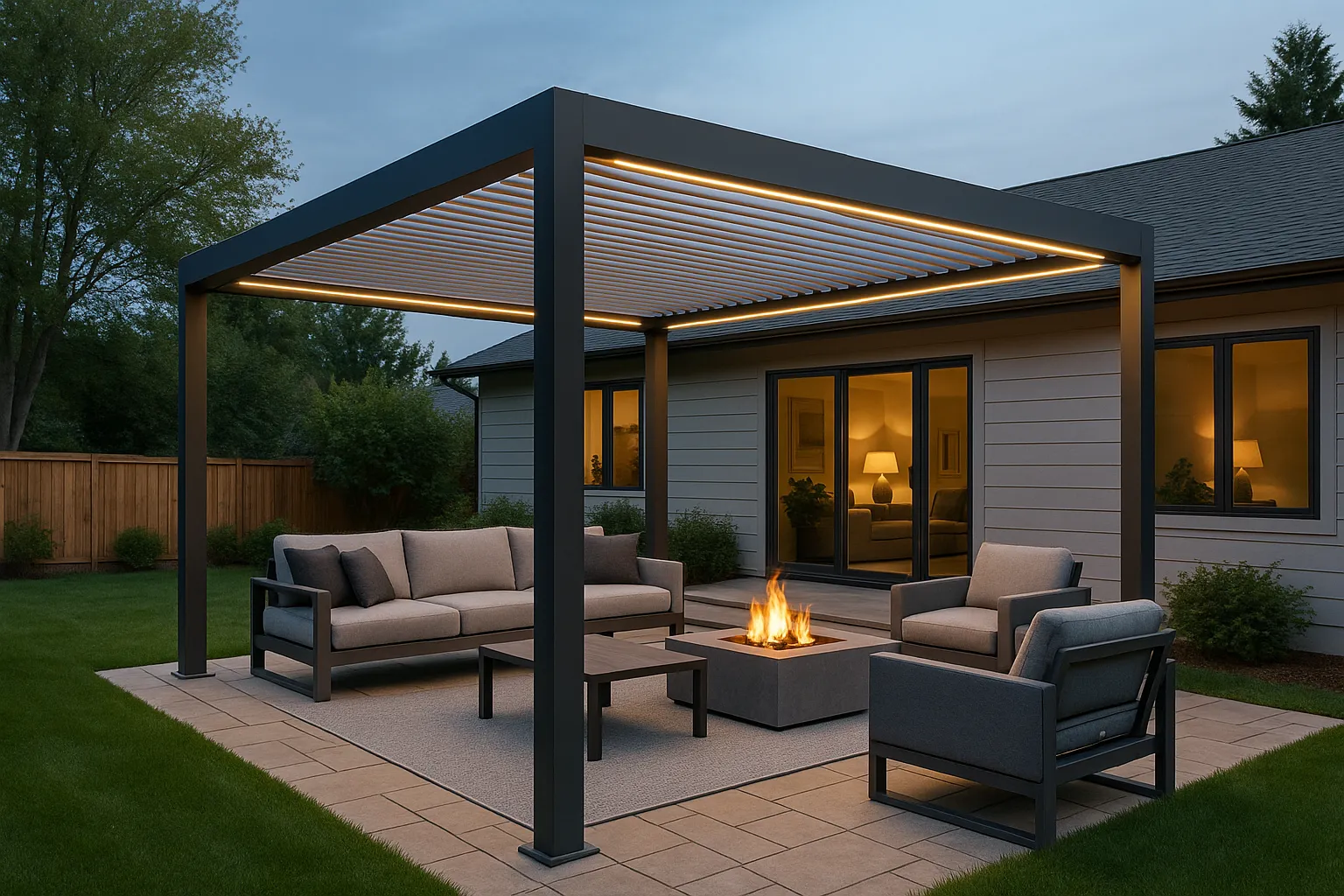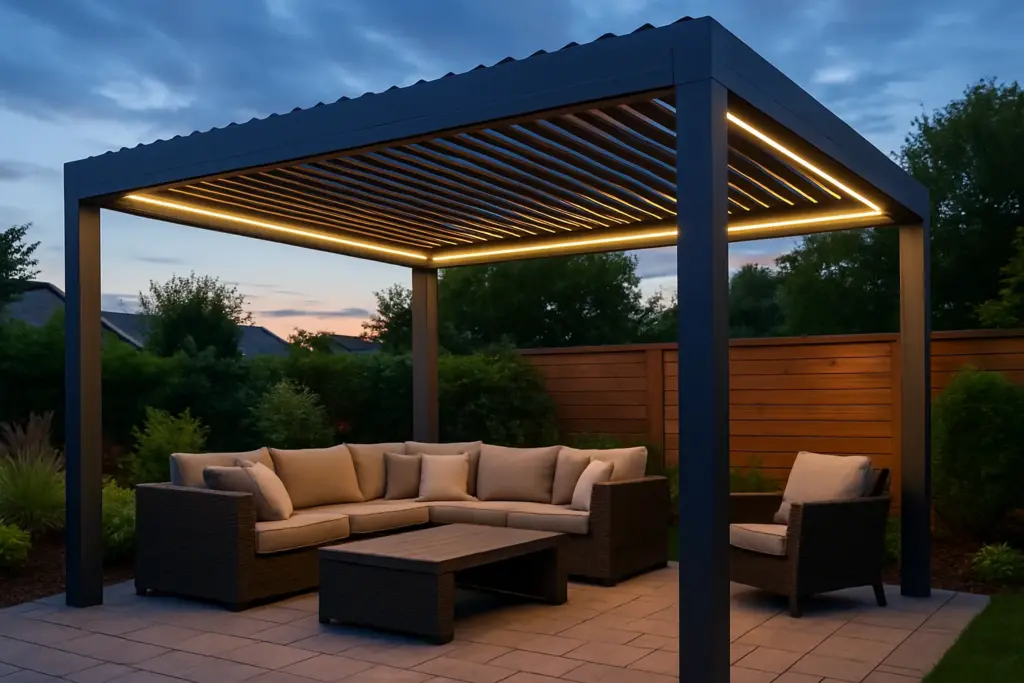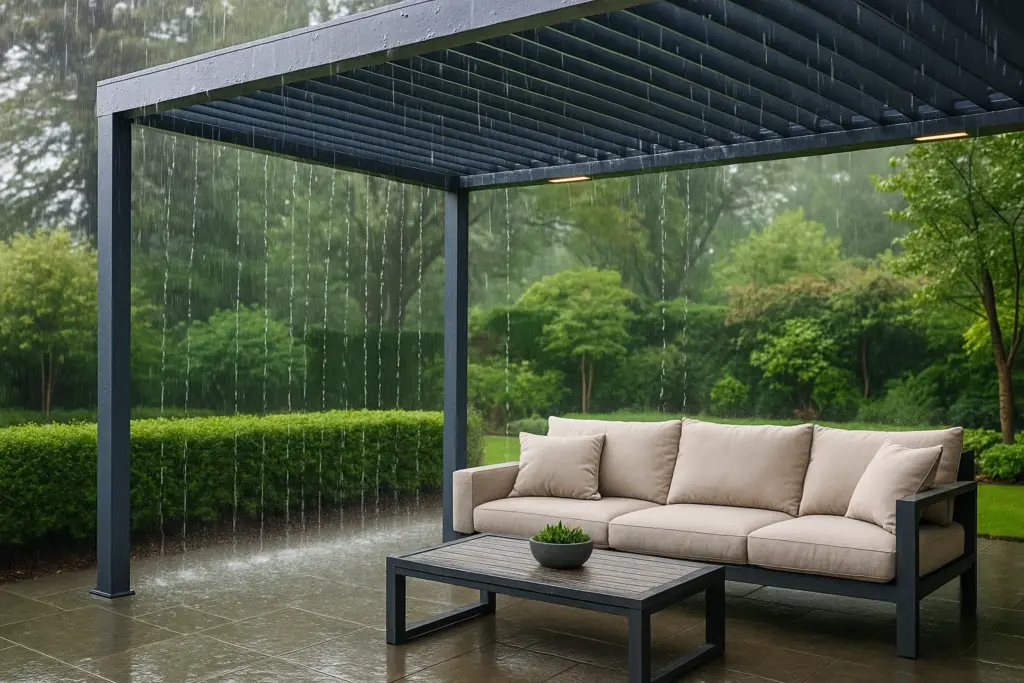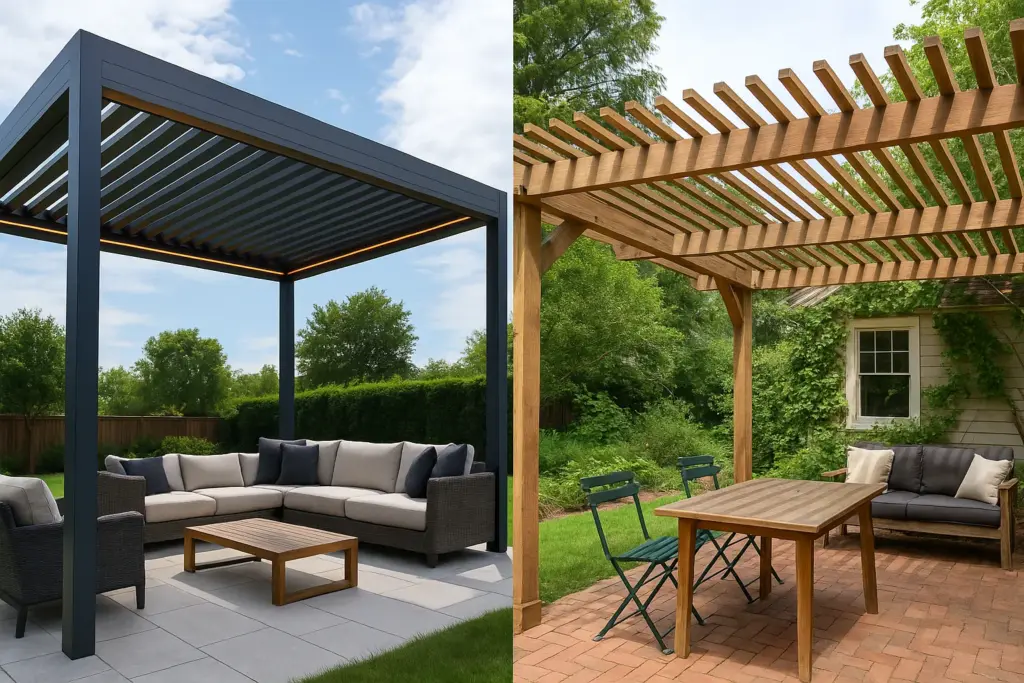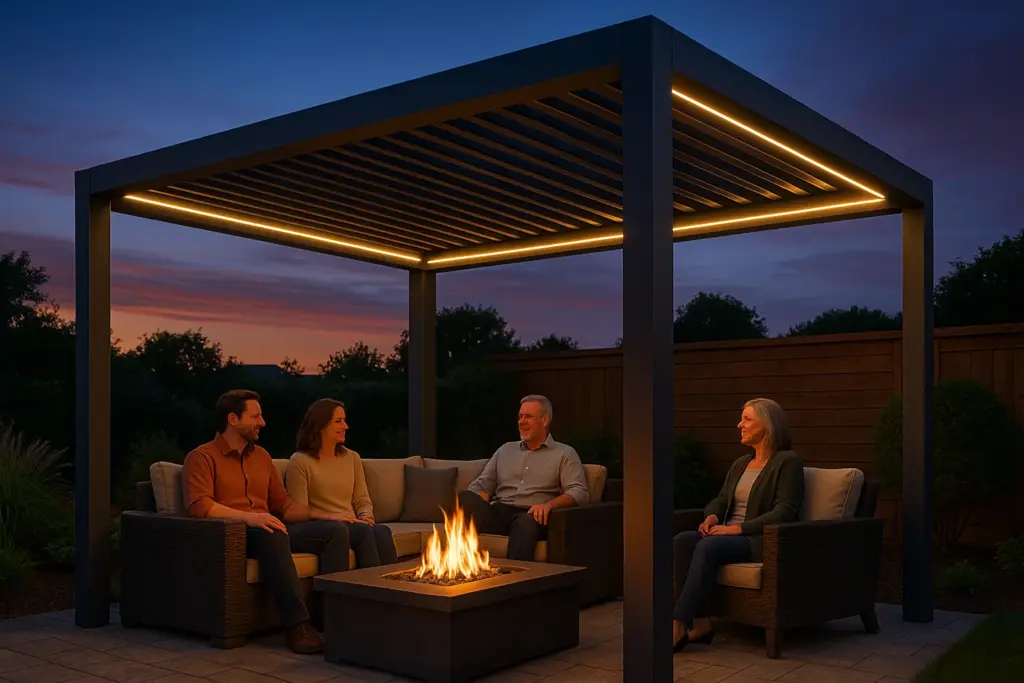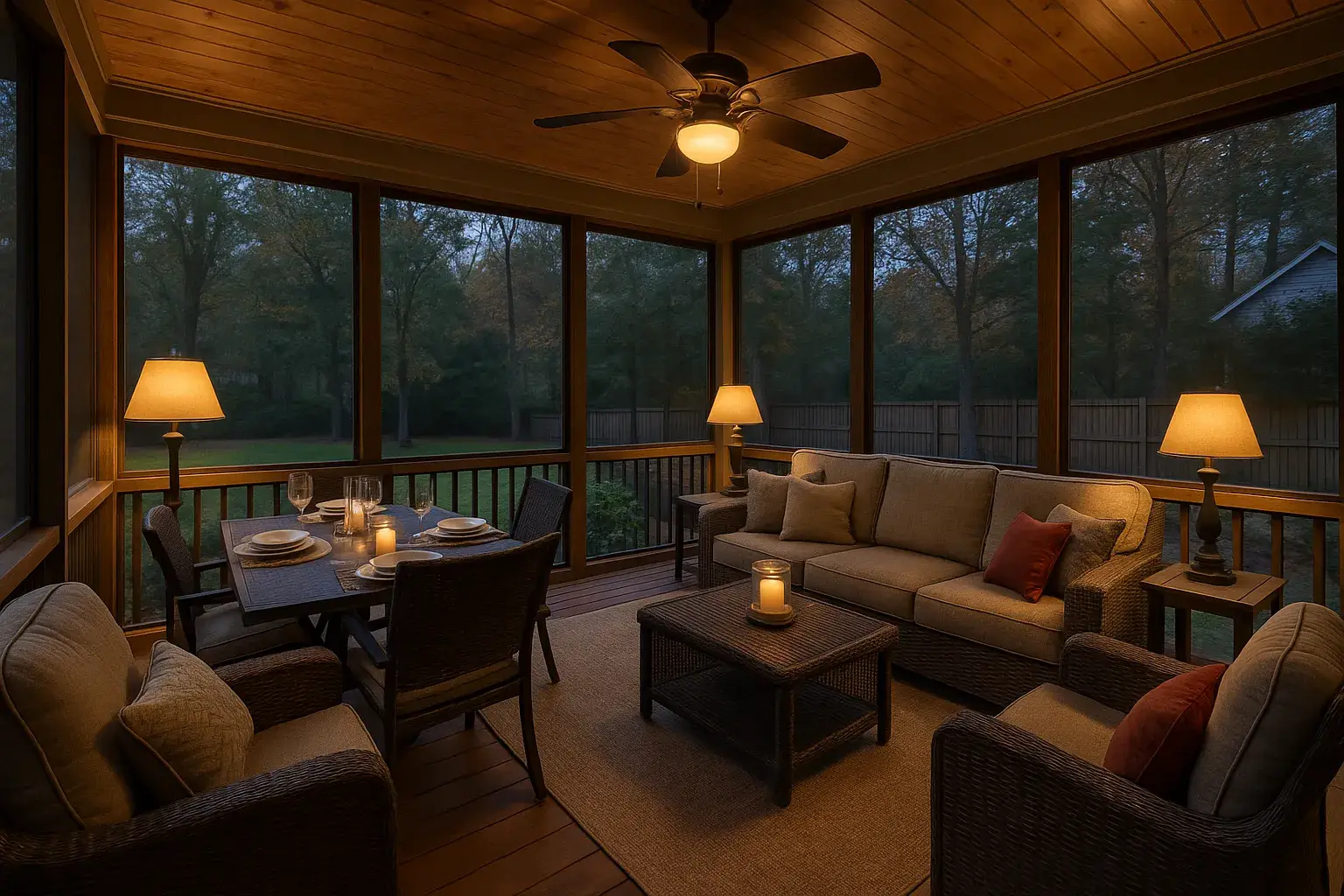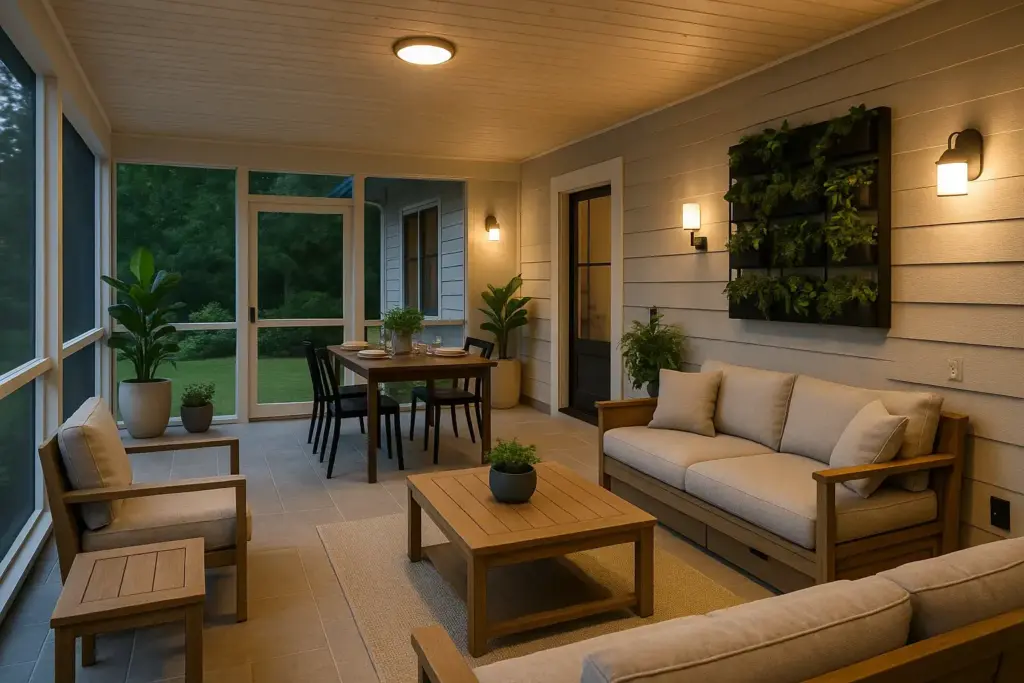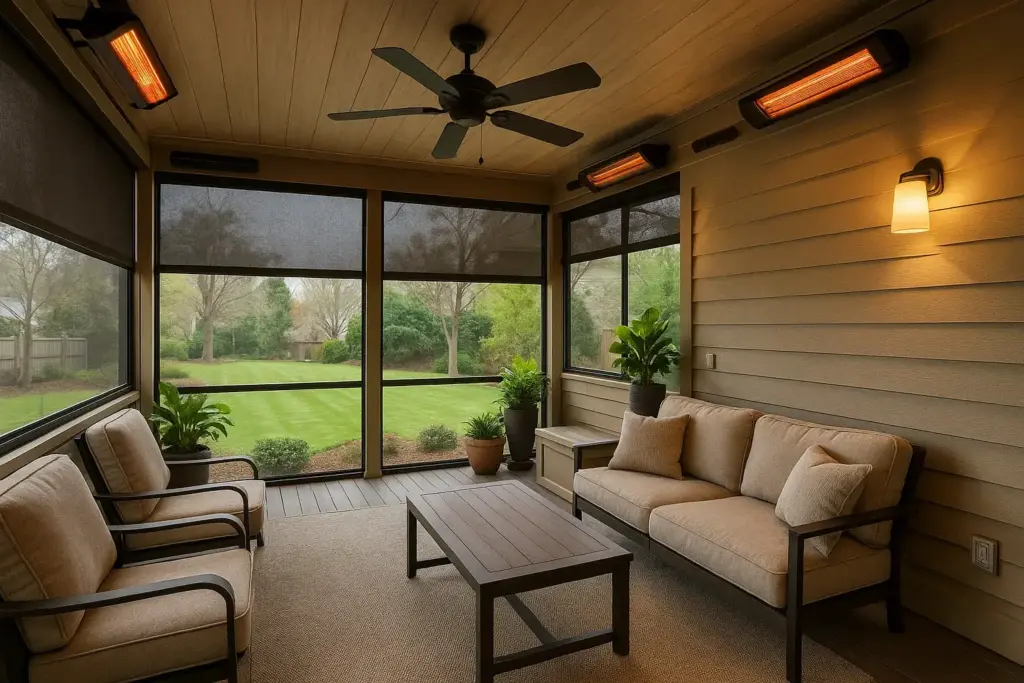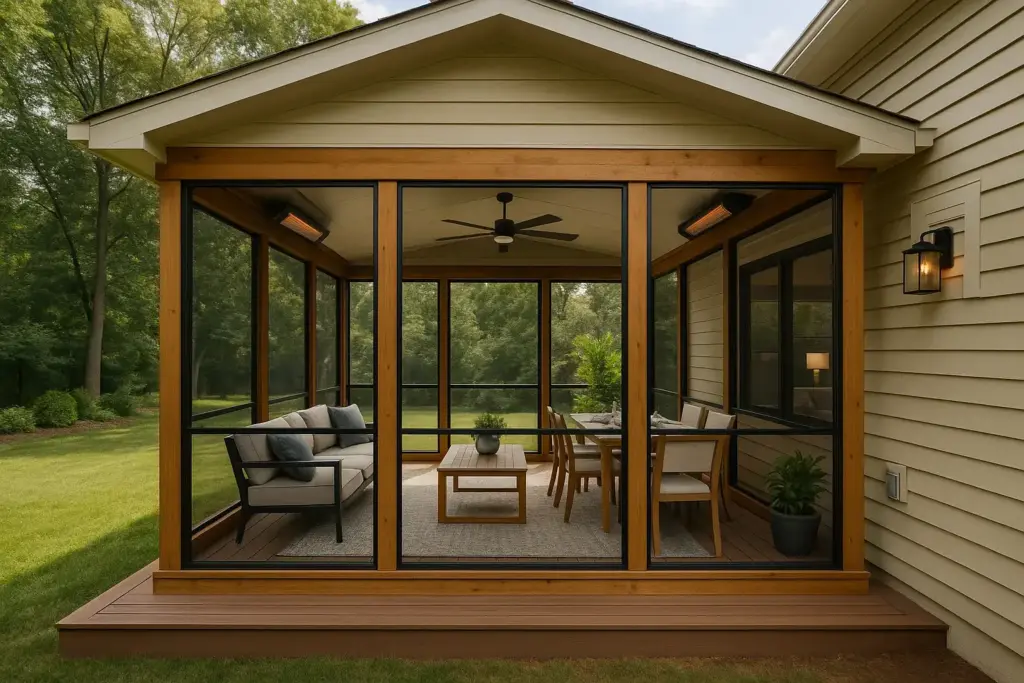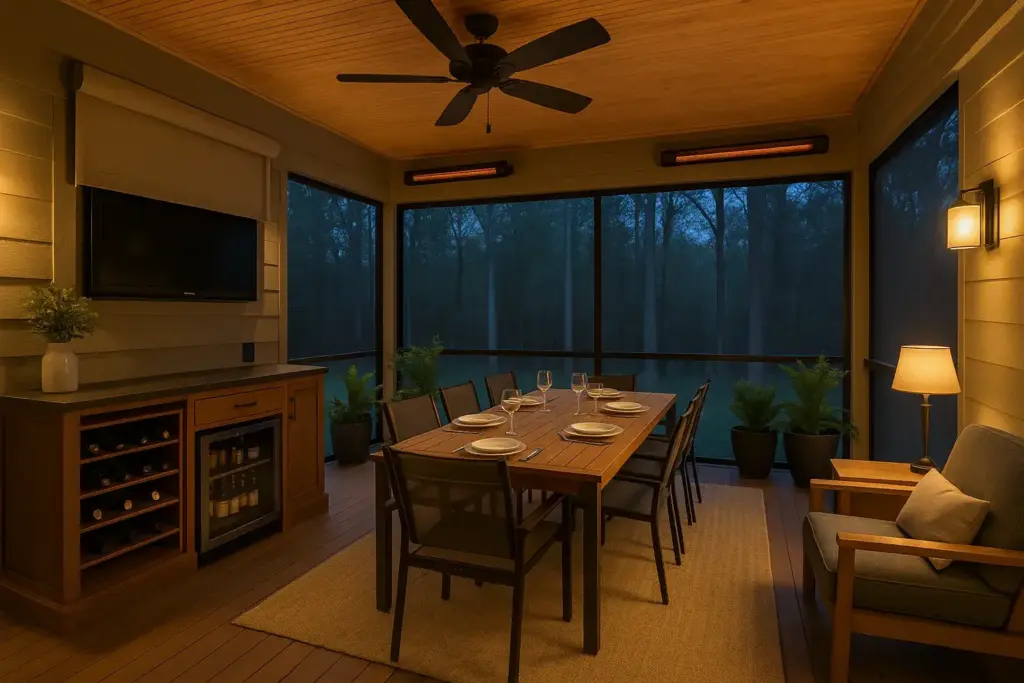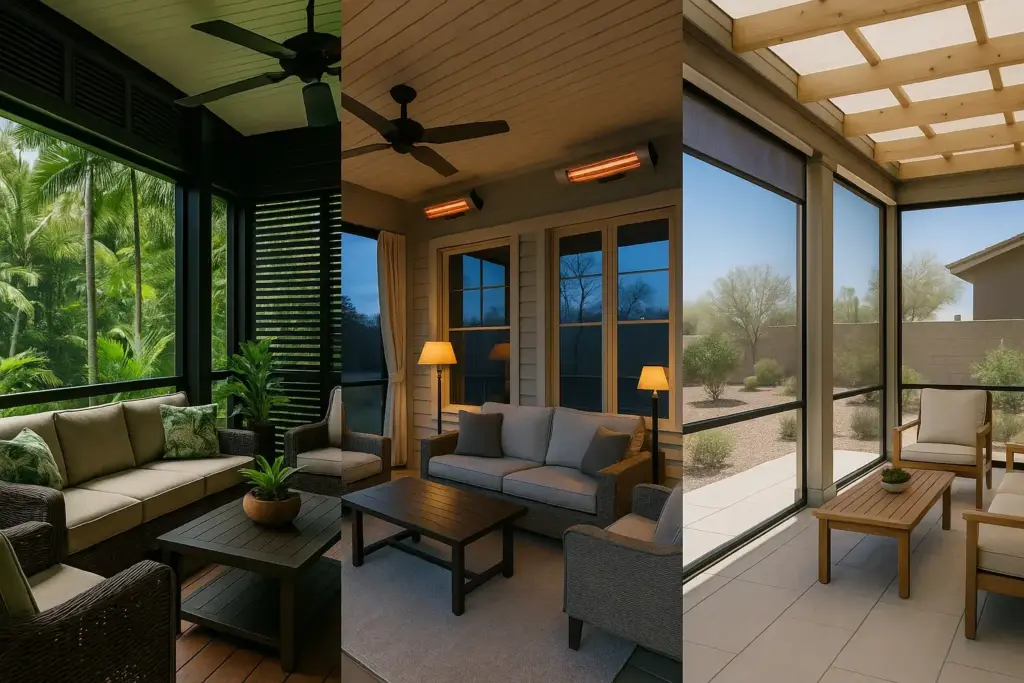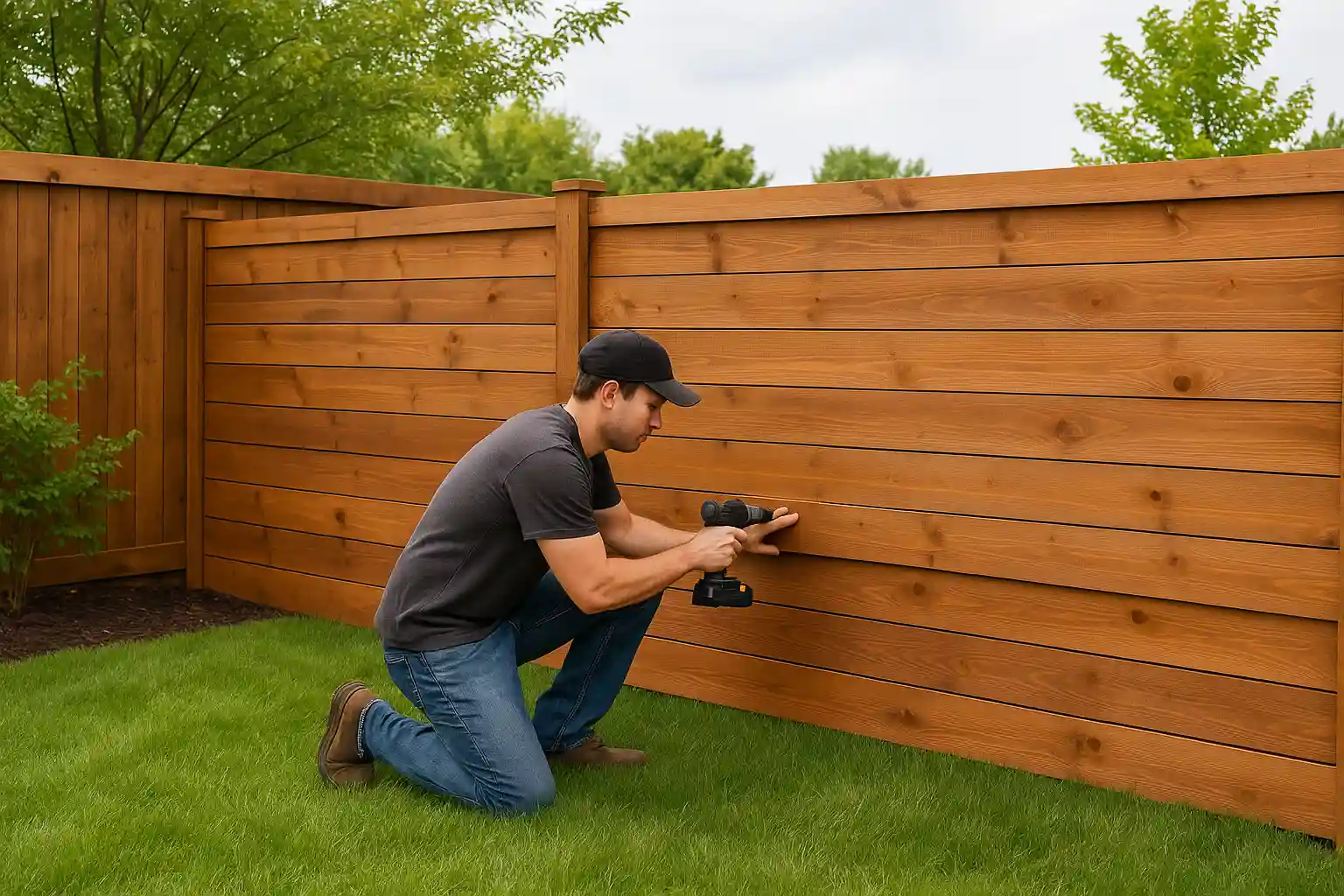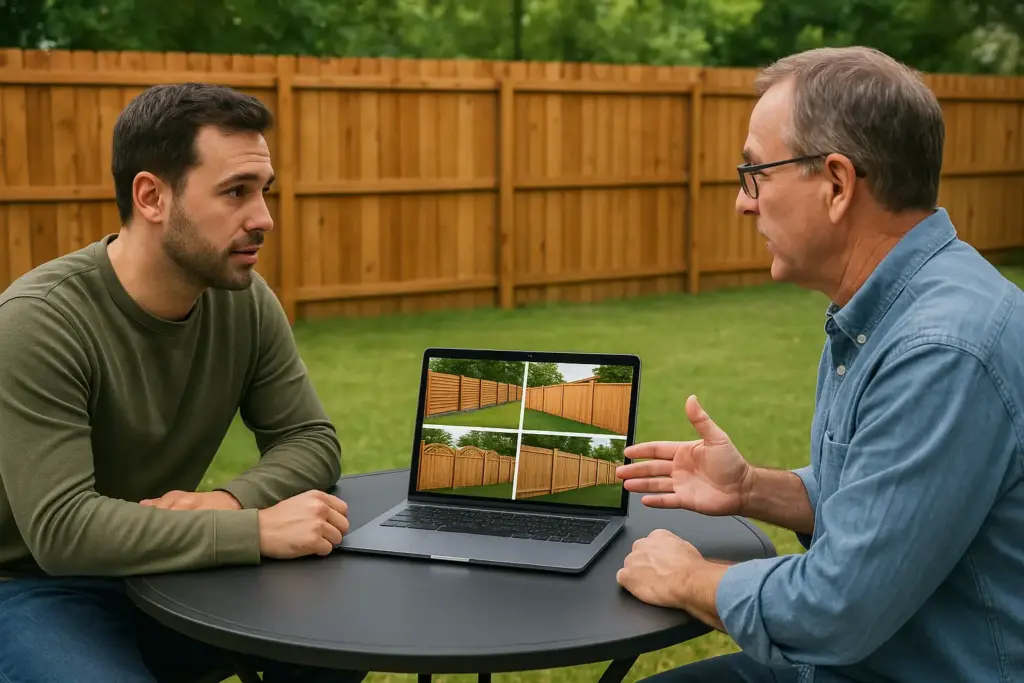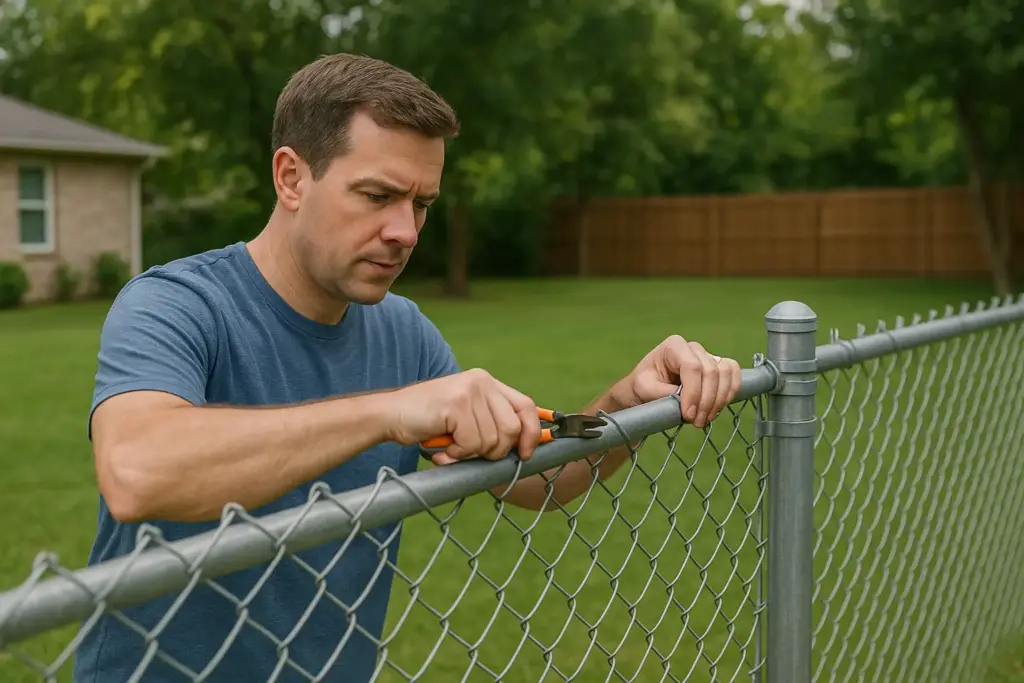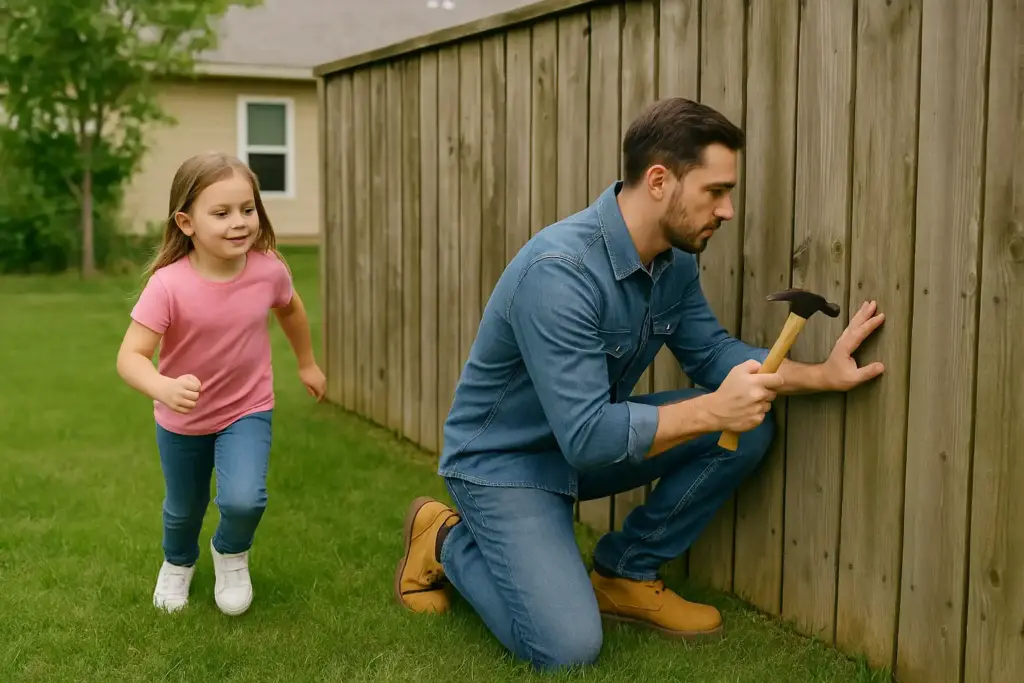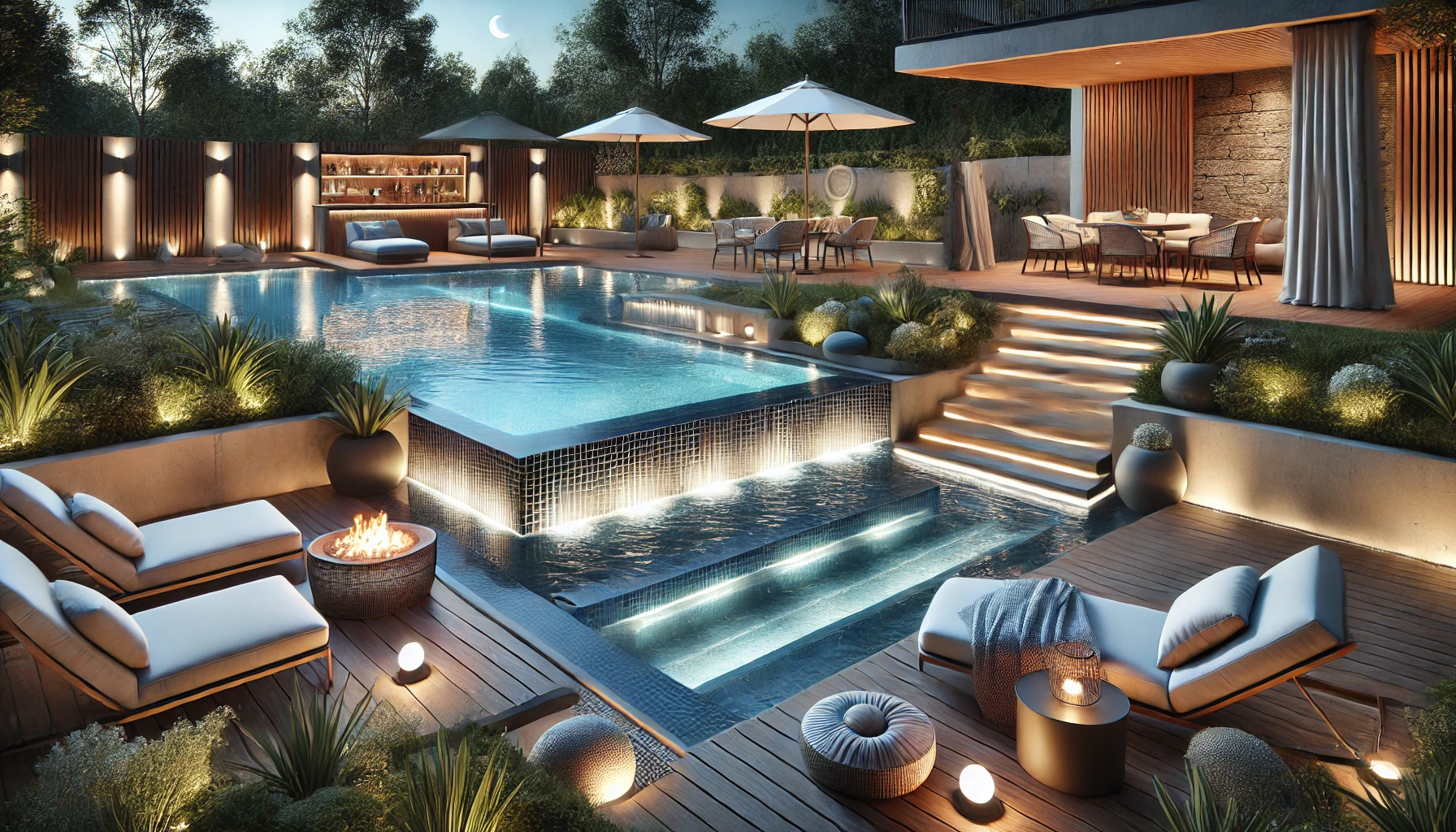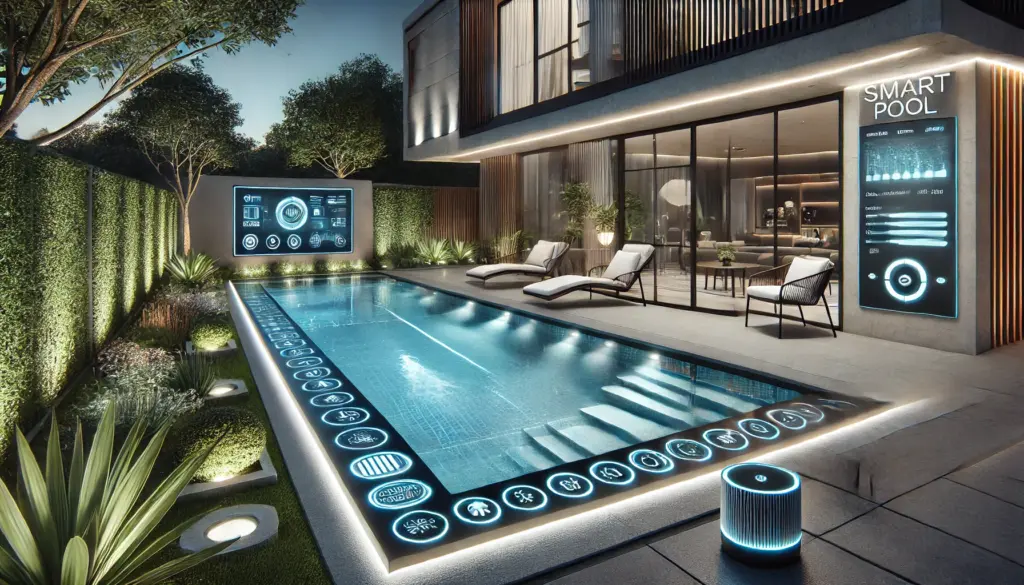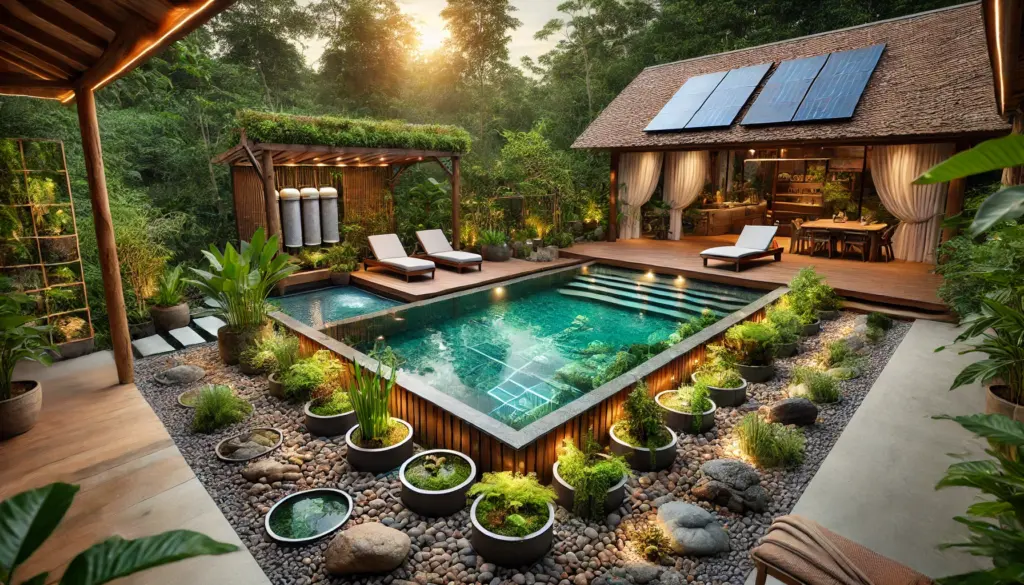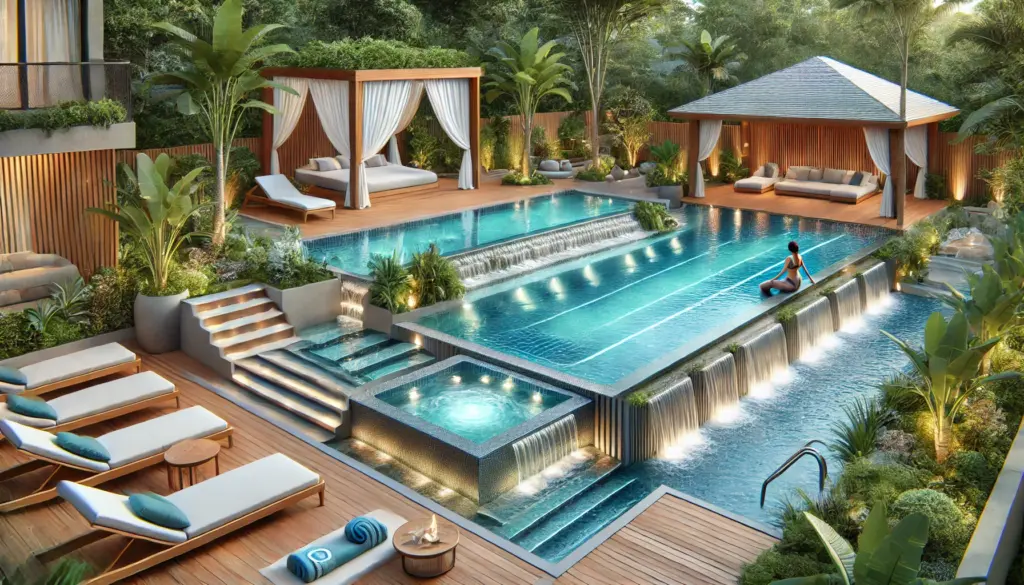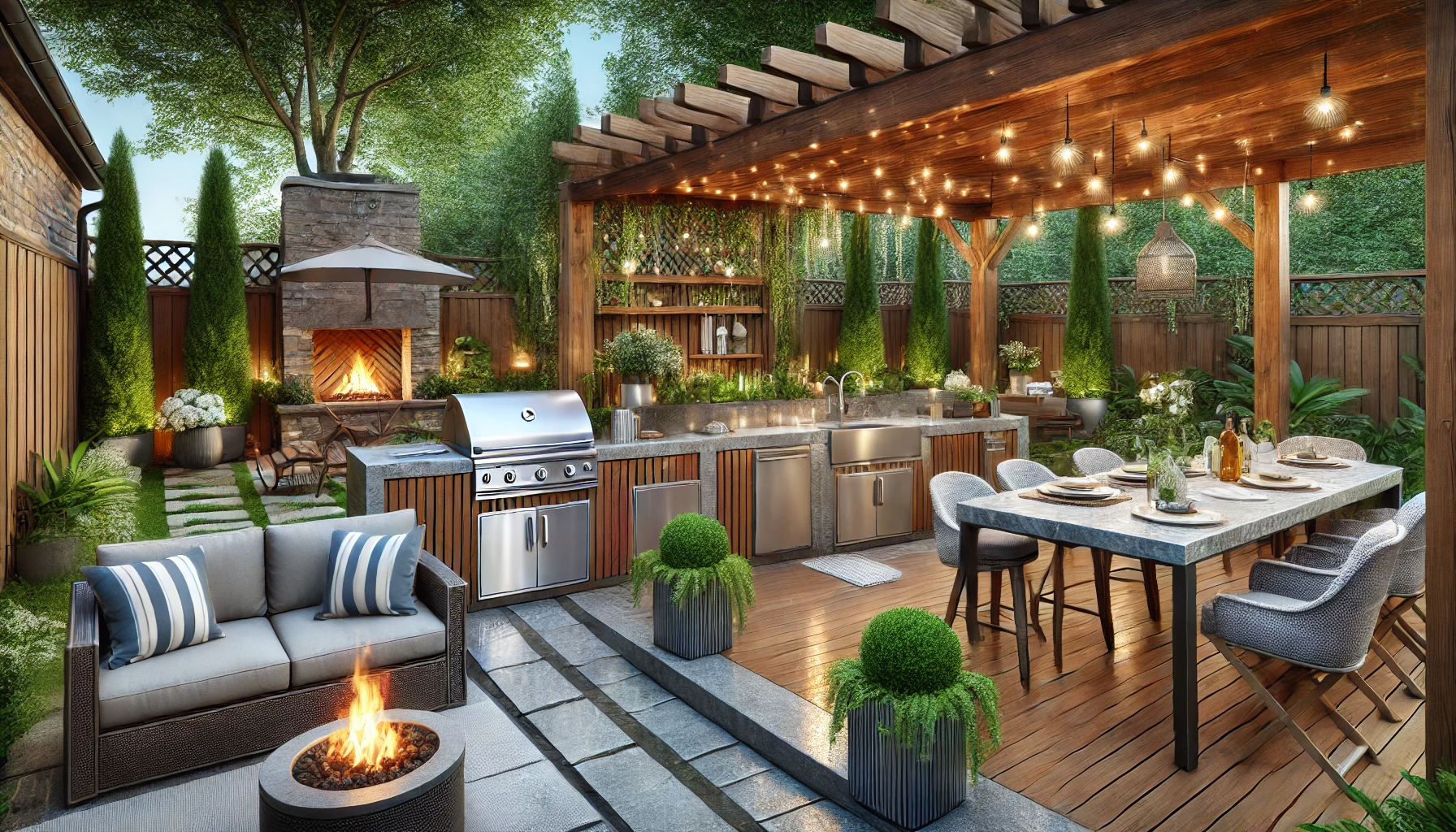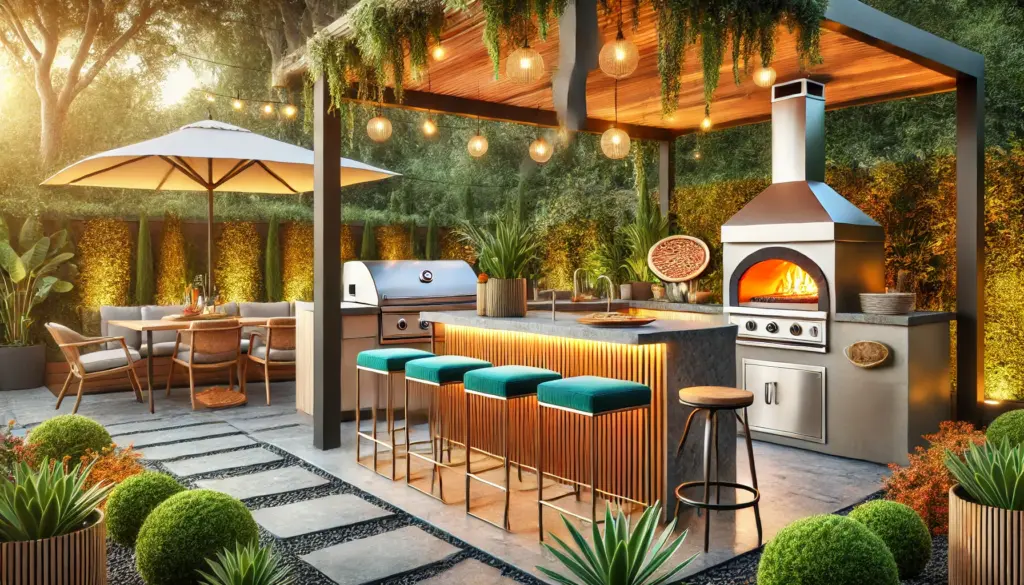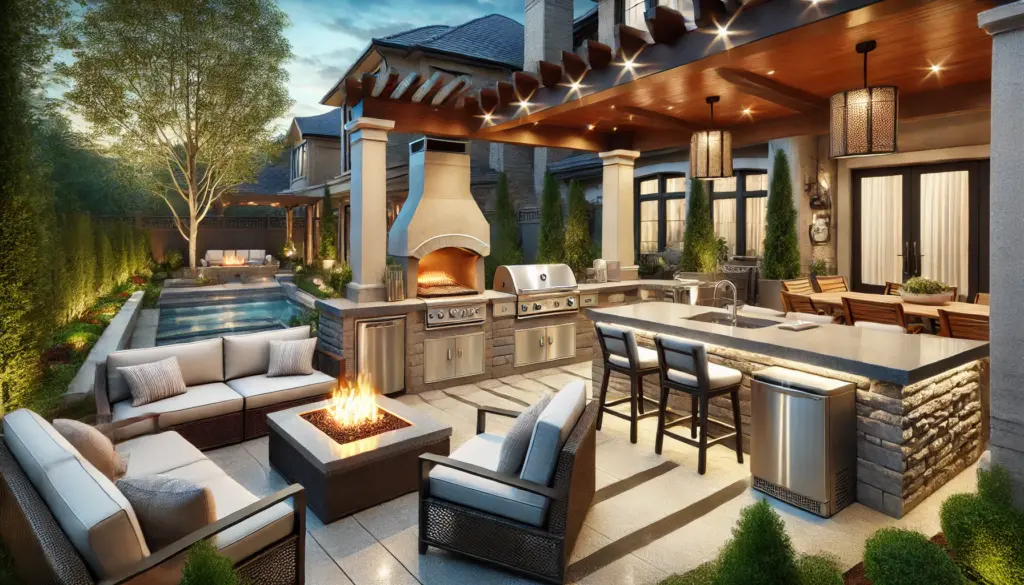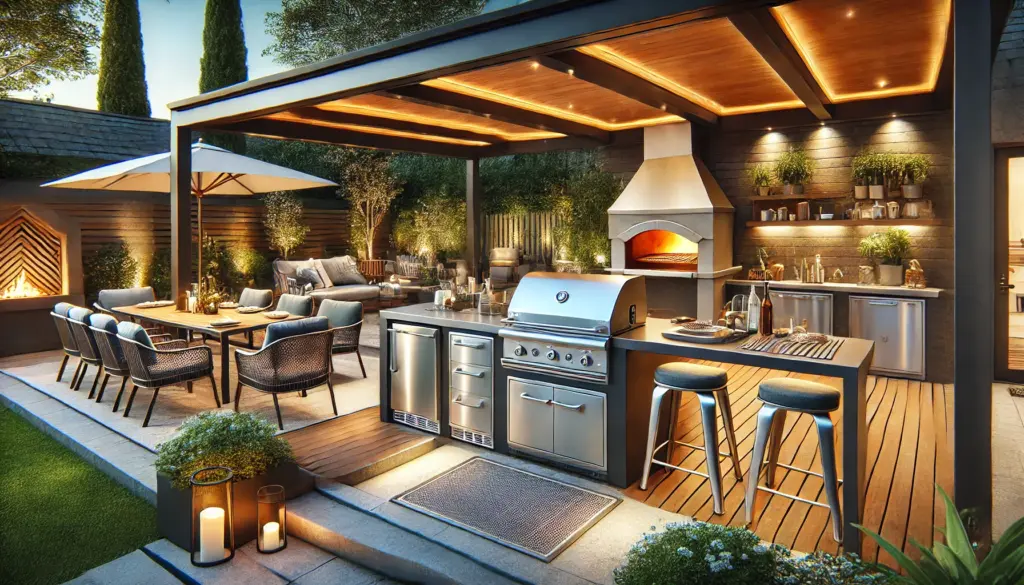Simple changes do more for backyard comfort than elaborate renovations most homeowners think they need. When you fix actual problems like harsh afternoon sun or nowhere decent to sit, your outdoor space gets used daily instead of sitting empty. Fancy features might look the part, but simple changes do the heavy lifting when it comes to daily comfort.
Well, that’s not all. Improving your backyard brings benefits straight to your door. You get extra living space, better home value, and options for outdoor entertaining with family and friends. To enjoy these perks, you need to make smart calls about materials, layout, and shade.
In this article, we’re covering practical backyard comfort ideas that work in Brisbane’s climate. We’ll share how to assess your outdoor area, choose quality furniture, and set up functional zones. Let’s get into the changes that actually make your patio or deck more comfortable.
What Makes a Backyard Actually Comfortable?
A comfortable backyard gives you protection from the weather, enough seating that actually feels good, and zones that suit how you spend time outside. Sounds simple enough, right?
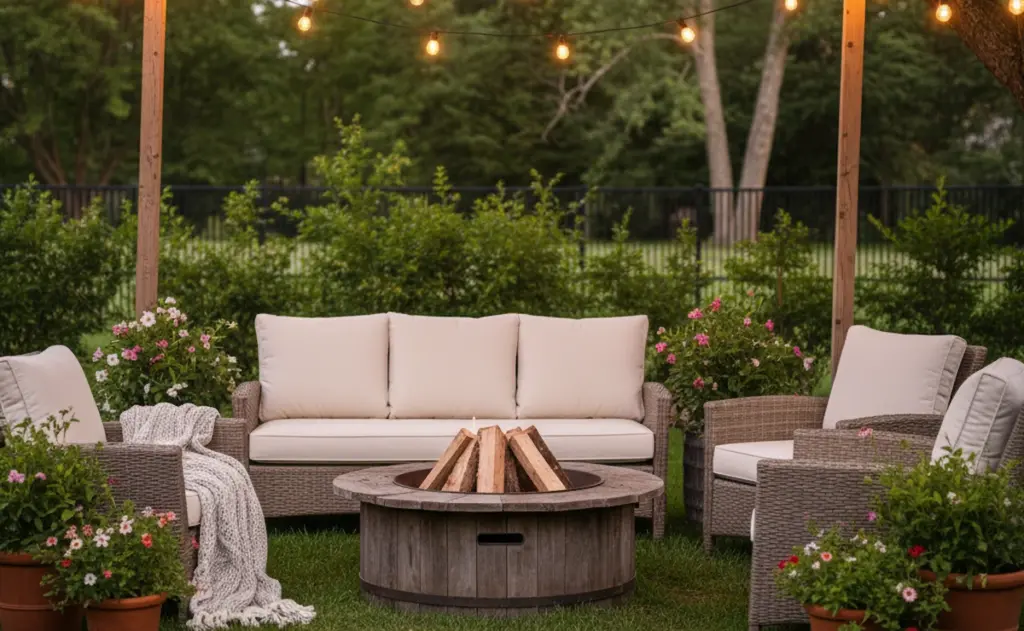
Comfort means different things depending on your setup. Some homeowners need shade from afternoon sun, others want wind protection, while many just need better outdoor furniture that doesn’t fall apart after one season.
Your outdoor space should feel natural to use, not something you force yourself into. Think about temperature control first, then seating quality, and how easily you move between areas. When you nail these basics, creating an inviting atmosphere happens on its own.
Figure Out What Your Outdoor Space Needs First
Skipping this step means you’ll buy the wrong furniture, build shade in useless spots, and waste money fixing problems you didn’t need to create. Every yard works differently based on sun patterns, wind, and how you actually use the outdoor space.
Before you spend a dollar on your patio or deck, map out what’s already happening in your backyard. Note where the heat hits hardest, which areas feel exposed to wind, and where you’d naturally want to sit. This saves you from guessing and helps you work within your budget.
Track Where Sun and Wind Hit Throughout the Day
Morning sun might be pleasant, but western afternoon heat makes areas unusable in summer (that Instagram-worthy setup looked great for exactly two weekends). Wind tunnels between houses can ruin outdoor dining, even on nice days.
Note these patterns before buying furniture or building permanent structures. Spend a weekend watching how elements move through your yard at different times. What feels comfortable at 8 am might be unbearable by 3 pm.
How You’ll Really Use the Area
Weekly barbies need different setups than quiet morning coffee spots or kids’ play zones. Consider how many people you typically host and what activities happen most often in your outdoor entertaining space.
Don’t design for imaginary dinner parties if you mostly want solo reading time. Be honest about whether you need a full outdoor dining table or just a couple of comfortable benches. Your family’s actual habits should guide every decision you make.
Materials That Stand Up to Queensland Weather
Ever bought outdoor furniture that looked perfect in the store but fell apart after one Brisbane summer? Why does this even matter? Because replacing cheap furniture every season will hit you where it hurts.
Here’s a quick breakdown of what actually holds up in our climate:
|
Material |
Why It Works in Queensland |
|
Treated hardwood |
Handles humidity and resists rot with yearly oiling |
|
Aluminium frames |
Won’t rust in coastal or stormy conditions |
|
Powder-coated steel |
Tough finish that holds up against rain and sun |
|
Weather-resistant fabric |
Dries fast after storms and won’t fade under UV |
|
Quality resin or plastic |
Low maintenance and won’t crack in the heat |
Now, you’re probably thinking this sounds expensive. Not always. Budget-friendly doesn’t mean buying the cheapest option. It means choosing materials that won’t cost you double when they need replacing in twelve months.
Take treated pine as an example. It looks great at first, but it needs yearly oiling to handle Brisbane’s humidity (timber and Brisbane storms have a complicated relationship).
If you want something lower maintenance, aluminium and powder-coated steel resist rust far better than cheaper metals. Spending a bit more upfront on quality ensures longevity for your outdoor space, so you’re not back at Bunnings next summer buying the same chairs again.
Set Up Zones for Outdoor Entertaining and Downtime
The best outdoor living spaces work because they separate activities. One person reading doesn’t interrupt another person cooking. One group chatting doesn’t block the kids running around. When you create distinct zones in your outdoor entertaining space, the whole area becomes a more usable space for everyone.
Getting zones right the first time means you won’t need to move heaven and earth later. Think about where activities naturally happen and build around that.
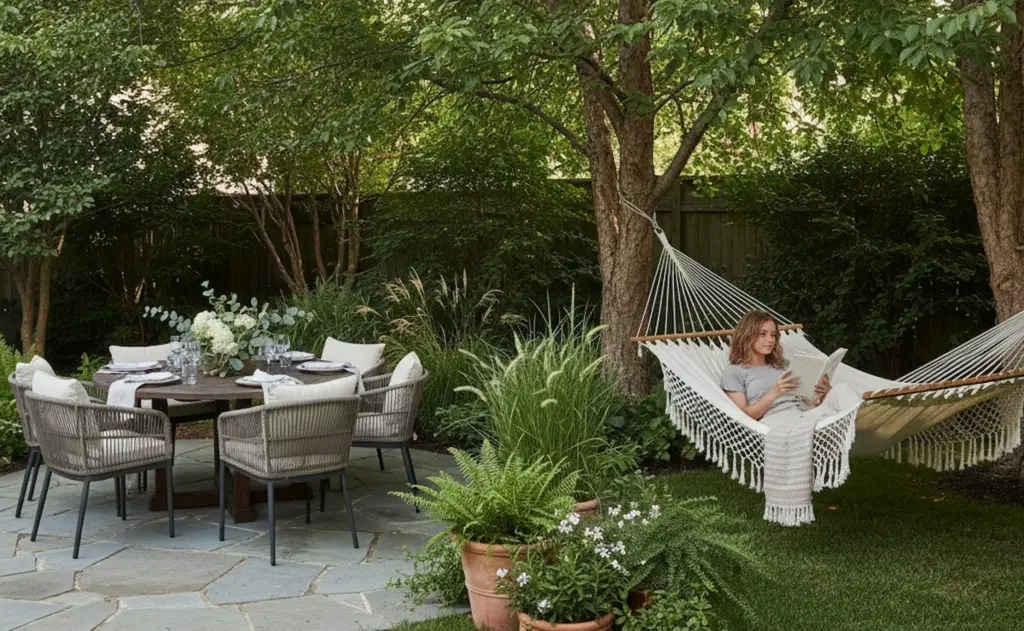
Your Outdoor Dining Area Sorted
Place your outdoor dining area close to your kitchen door. This makes serving food practical instead of a workout. Allow at least 1.5 metres around tables so people can move chairs without bumping walls or railings.
We’ve renovated backyards across Paddington and Ascot, and the dining zones that get used most are always within five steps of the back door. Once you’ve sorted the location, think about overhead cover on your patio or deck. It helps when unexpected afternoon storms roll through Brisbane.
Lounging Spots for Any Season
Corner spots with two walls just feel more protected and comfortable than open areas. So when you’re choosing where to place lounging furniture, keep it away from main pathways where kids and pets constantly move through.
For winter warmth, morning sun positions are perfect. During summer, shaded eastern spots on your patio give you relief from the heat. This simple switch extends how much of the year you actually use your outdoor living space.
Outdoor Kitchen Basics: Keep It Straightforward
Most outdoor kitchens end up as expensive barbecue stations because people overplan and undercook the basics. The thing is, you don’t need a full commercial setup to host gatherings in your backyard.
Our clients in Chapel Hill and Indooroopilly who kept their outdoor kitchen simple still use them weekly, three years later. The ones who went all out? Many barely touch theirs now.
Here’s what actually gets used:
- Bench space: A decent prep area near your grill makes cooking easier without running inside constantly.
- Weatherproof storage: Keep utensils and plates outside so you’re not carrying everything back and forth.
- Quality grill: If a built-in barbecue isn’t your cup of tea, a portable option works just as well for most families.
Start budget-friendly and add features once you know how you use the space. You can always upgrade later, but you can’t get back the thousands spent on things you never touch.
Where to Put a Fire Pit (And Where Not To)
A fire pit can turn your backyard into the favourite hangout spot during cooler months. But put it in the wrong place, and it becomes a hazard nobody wants to sit near.
Before you dig or buy, keep these in mind:
- Clearance: Fire pits need at least 3 metres from fences, overhangs, and trees that drop leaves. This buffer zone keeps sparks from landing on anything flammable. The last thing you want is embers drifting onto your neighbour’s fence or your own deck.
- Wind direction: Pay attention to how the wind moves through your yard before locking in a spot. Position your fire pit where smoke won’t blow directly into house windows or your neighbour’s washing line (nobody wants to be that household on the street). A quick test on a breezy evening saves you from relocating later.
- Local regulations: Check your council rules first. Brisbane has specific guidelines about open flames in residential areas, and some suburbs have stricter requirements than others. Getting this sorted early avoids fines or having to rip out what you’ve built.
- Safety style: Sunken or bordered fire pits are safer around kids than raised portable versions. The edges keep little ones from accidentally stepping too close, and the contained design holds coals better if someone bumps into it.
So, the takeaway from this part of the article is simple. A fire pit makes a brilliant focal point for your backyard, but only when it’s placed where everyone can relax without worrying.
Outdoor Blinds or Pergola: Which One Fits?
Now that you’ve sorted shade options, you might be wondering whether outdoor blinds or a pergola makes more sense for your setup.
Outdoor blinds cost less upfront and give you rain and wind protection almost instantly. You can roll them down when a storm blows through and roll them up when you want open air. They work well on existing patios or decks without major construction.
Pergolas take longer to build and cost more, but they add permanent structure to your outdoor area. They also boost property value because buyers see them as a solid feature rather than an add-on. If you’re planning to sell in a few years, a pergola can become a real selling point.
So which one fits? Your choice comes down to whether you want flexibility or a fixed architectural feature. If the budget is tight right now, outdoor blinds let you enhance your space without a big commitment. If you’re after something that lifts your home’s architecture long term, a pergola is worth the investment.
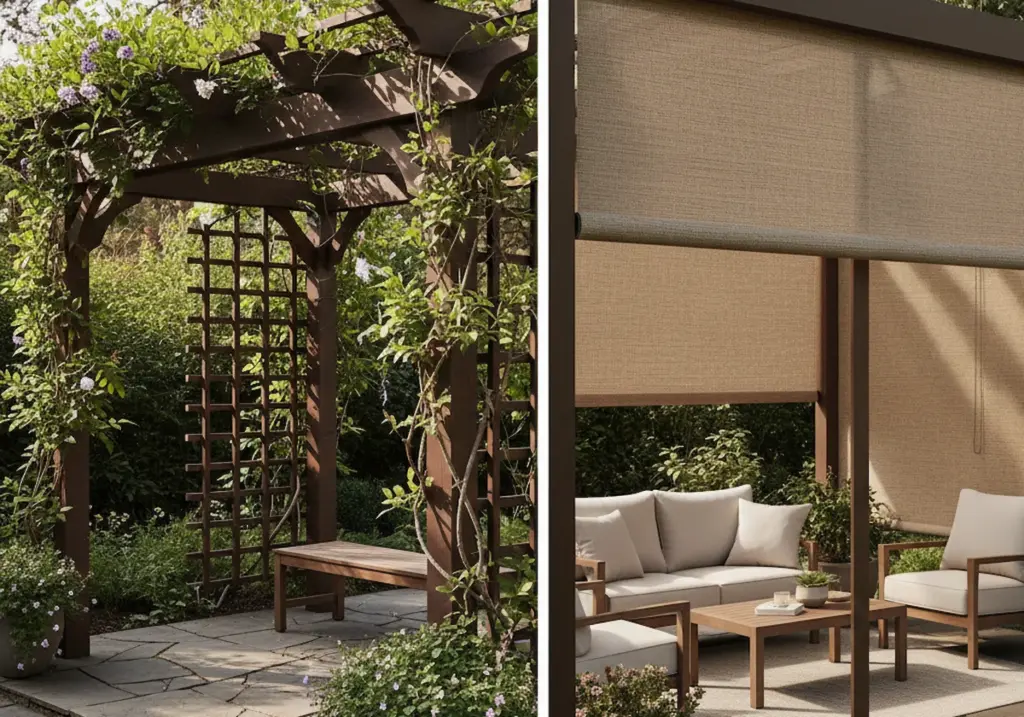
Quick Fixes That Actually Lift Home Value
Small outdoor improvements return some of the highest value when you sell, often paying for themselves plus extra. The numbers don’t lie on this one.
Potential buyers notice curb appeal before they even step inside. And what shapes that first impression? A tidy front yard with fresh landscaping tells them the property has been looked after. Simple things like trimmed trees, healthy flower beds, and a few potted plants near the entrance all add to that instant visual appeal.
Your backyard sells the lifestyle. Prospective buyers in Brisbane want to see year-round outdoor entertaining potential when house hunting. A defined outdoor dining space, decent lighting, and a well-maintained patio or deck photograph well for listings and make a big impact during inspections.
You don’t need to spend thousands either. A fresh coat of paint on tired fences, some new garden beds, and budget-friendly lighting upgrades go a long way. Even adding a small water feature or a couple of benches creates visual interest that catches a buyer’s eye.
These quick fixes become a real selling point because they show the home is move-in ready. When potential buyers can picture themselves hosting friends out the back, you’ve already won half the battle.
Turn Your Outdoor Living Space Into Something You’ll Use
These backyard comfort ideas work because they focus on solving real problems like weather exposure, poor layout, and materials that don’t last. You don’t need a complete overhaul to make your outdoor area more comfortable. Start with the changes that fix your biggest frustration, whether that’s a lack of shade or nowhere to sit properly.
Small upgrades add up faster than waiting for the perfect renovation budget. A few smart decisions about your patio, deck, or garden can turn an ignored space into a captivating retreat you actually want to spend time in.
If you’re ready to transform your backyard into something your family will use year-round, Avalon Acres can help. We specialise in outdoor renovations across Brisbane that suit how you live, not just how things look. Check out our work and see what’s possible for your outdoor living space.

